
Many call him ‘John Paul the Great.’ This week, eight women talk about why they think this old Polish Pope knew more than most about...


Many call him ‘John Paul the Great.’ This week, eight women talk about why they think this old Polish Pope knew more than most about...





“Be indefatigable in your purpose and with undaunted spirit resist iniquity and try to conquer evil with good, having before your eyes the reward of those who combat for Christ.”
-Bishop Matthew Gibney 1874The ugly reality of sex trafficking seems to be behind the kidnapping of 50 Karen children.
Australia’s Foreign Affairs Minister has
BY ANTHONY BARICH National ReporterForeign Minister Stephen Smith has mobilised the Australian Embassy in Bangkok to liaise with the Thai Ministry of Foreign Affairs to help find 50 children feared abducted for sexual trafficking from a Perth-funded Thai orphanage.
Mr Smith told Archbishop Hickey in a letter sent on 2 March that One Heart Association member Adelia Bernard’s account of the children’s disappearance was “gravely disturbing”.
Mr Smith said the Australian Embassy in Bangkok contacted the Thai Ministry of Foreign Affairs as soon as his office received Archbishop Hickey’s letter.
“The Thai Ministry of Foreign Affairs expressed concern for the children and has already begun to consult with relevant Thai agencies,” the Foreign Minister said in the letter.
“I would also like to take this opportunity to commend the One Heart Foundation (which has raised $700 a month over the past six years for the orphanage), especially [Presentation] Sisters Cecilia and Consuela, for the compassion and life-preserving assistance they have given to the children at the Sang Khan Buri orphanage.
“Thank you for bringing this case to the attention of the Government. I assure you we will continue to work with the Thai Government to seek answers about the disappearance and ensure that you and the One Heart Foundation are kept updated.”
For Foreign Minister’s reply came after Archbishop Hickey wrote to him on 15 February seeking urgent help in finding the orphans aged 10-13 and were believed to have been kidnapped in a highly orchestrated operation on 28 December.
Mrs Bernard, a parishioner of St Joseph’s parish in Midland, has worked for over 30 years for the Catholic Office for Emergency Relief and Refugees (COERR) established by the Catholic Bishops Conference of Thailand in 1978.
“I grabbed the Blessed Sacrament... and ran,” Franciscan says of Wattleup fire.
 BY ANTHONY BARICH National Reporter
BY ANTHONY BARICH National Reporter
Three Franciscan Friars of the Immaculate narrowly escaped from having their Munster friary and five-acre property being burned to the ground as fires raged around Wattleup on 1 March.
And while they would be the first to admit they couldn’t prove it, they have no doubt that their prayers to Mary stopped their Munster Friary from going up in flames.
Frs Joseph Michael Mary McShane, Andre Mary Feain and Friar Cyprian Mary Costello looked out their windows at 3.05pm to see the fire across the street racing towards their property.
Authorities believe the fire was deliberately lit. As temperatures soared to 35C and flames surged to an estimated 18 metres in height, police evacuated nearby properties. However the friars didn’t wait to be told to abandon their Our Lady Gate of Heaven Mission in Munster.
“When I first saw the fires my heart sank. I realised very quickly that it was quite serious as it was so close and I knew we’d be in great danger,” Fr Joseph, 46, told The Record
“The most important thing was that we saved our lives, so I grabbed the Blessed Sacrament, my ordination chalice, a statue of Our Lady of Fatima and some documents and ran.”
Before leaving the three friars put an image of the Divine Mercy on the window facing

the fire and a statue of Our Lady that their visiting founder Fr Gabriel Maria Pellettieri blessed last week out on the lawn facing the flames before leaving, and closed all the doors and windows. They also quickly sprinkled holy water around the property and asked the Blessed Virgin to protect the house. The fire, which burned through 31,000ha, crossed the firebreak onto their property,
and helicopters dropped water onto it. Three helitacs and 17 fire trucks attended the scene as six nearby sheds burned down and the Western Power sub-station was under threat.
“We were very blessed. We could’ve lost everything,” Fr Joseph said. Please turn to Vista 4 Friars bring Kelmscott parish, surrounds, together with special Marian Day - Vista 4
Western Australia’s award-winning Catholic newspaper since 1874 - Wednesday 10 March 2010 Perth, Western Australia $2 www.therecord.com.au the Parish. the Nation. the World. A helicopter dumps water on the Wattleup fire which burned down six sheds and threatened electricity supplies on 1 March. Authorities believe the fire was deliberately lit. Flames race towards the Franciscan Friary in Munster on 1 March. The three Franciscan Friars who were on the property at the time grabbed the bare essentials, including the Blessed Sacrament, before escaping. They believe urgent prayers and Mary’s intercession saved their residence from going up in smoke. PHOTOS: CHANNEL TEN NEWS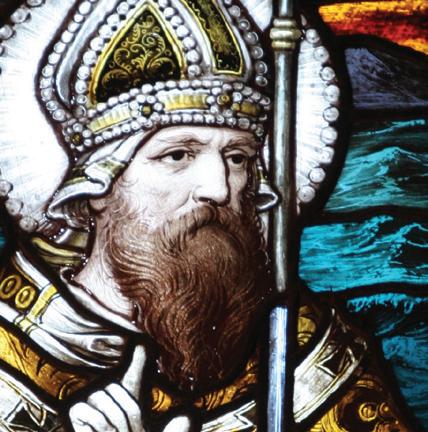
Patrick
c. 389-461 March 17
Born in Britain, Patrick was carried off by raiders and enslaved in Ireland. He became prayerful during six solitary years as a herdsman. After escaping, he made his way to Gaul, on the continent, where he trained as a priest. In a dream he was called to evangelize Ireland, and in about 432 returned as a bishop. For nearly 30 years he was the apostle to the Irish, bringing an organized church into existence in a pagan land. Toward the end of his life he made a 40-day retreat in Mayo that gave rise to the famous ongoing Croagh Patrick pilgrimages.
Saints
AFTER hosting Wilson parish council meetings in his home for the past five years, Wilson parishioner Tim McManus finally has his living room back.
Mr McManus, who had been involved in Our Lady of Perpetual Help parish for some 26 years, had been used his house for parish meetings while chair of the parish council for the past six years, and decided he’d build a new meeting hall.




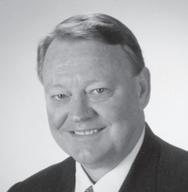
From the day he took over he’s constantly had projects on the go. First he restored the church which had not had maintenance done on it for years, subdivided the land and built a carpark, as it was getting dangerous when people pulled out after Mass just as people were entering the Castledare Miniature Railway next door.
Finally, the hall was built – complete with disabled facilities - and opened under Mr McManus’ direction on 21 February by Archbishop Barry Hickey, who had a personal interest in the project having studied about the history of the Christian Brothers looking after orphans at the Castledare building while studying Social Work at the University of Western Australia.
The land was gifted to the Archdiocese by the Christian Brothers and the church was instituted in Margaret Street in 1957 when the parish had a kindergarten.
The meeting hall was built with children’s liturgy in mind, with a movable, stackable, sound-proof glazed glass wall through which the children could see proceedings in the church.
The emphasis was on maintaining a similar style to the church and the local surroundings, including Niana House, which is on the Australian, State and Council heritage lists, built in the 1800s.
Niana house used to be the kitchen for church functions, and even served as the church for the Wilson parish, as well as
THE St Vincent de Paul Society’s Osborne Park Clothing and Furniture Depot has reported a 100 per cent increase in the amount of material aid being distributed to the WA community leaving the warehouse stock levels completely empty.
Lucinda Ardagh, the Society’s WA spokeswoman, said that almost $30,000 worth of material welfare assistance was distributed to West Australians in need
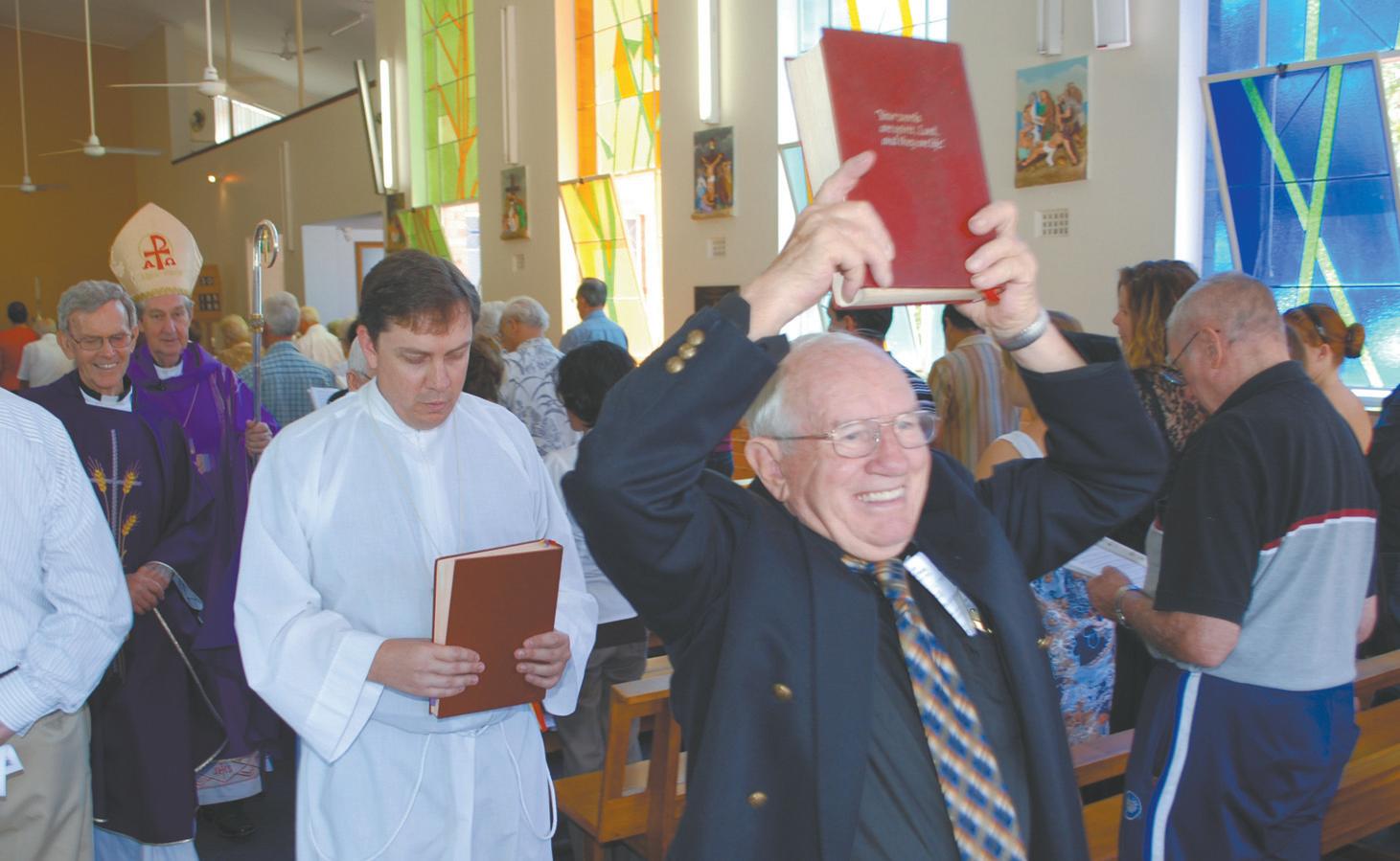
part of the Christian Brothers’ orphanage. Catholic Homes now has an aged care centre next door as part of the original complex.
To make way for the new room and joining wall, they demolished the old confessionals and now the sole confessional is in the working sacristy.
A special crucifix, which the Archbishop blessed prior to the 9.30am
in January 2010, but that figure skyrocketed in February with $63,000 worth of welfare being distributed. The welfare assistance distributed by the Depot comes in the form of mattresses, beds, bedding, wardrobes, crockery, pots and pans, tables and chairs and other general household items. The Depot has also experienced a decline in the amount of in-kind donations being received but a drastic increase in the amount of requests for welfare assistance. The Depot used to have three sea containers full of beds and mattresses, which are now all completely empty.
Mass
Mr McManus now looks forward to caravanning across Australia with his wife Carmel to Queensland in the coming weeks, just in time for his the 60th birthday of his brother Michael, an international Deputy Vice Chancellor of the University of Queensland.
The Society is again calling on the WA community to donate household items to respond to this demand so that every genuine request for assistance can be responded to. Unstained and untorn mattresses, bedding, tables and chairs, wardrobes, pots and pans and crockery are urgently needed. The Society is WA’s largest charity providing a helping hand to over 175,000 West Australians in the last financial year with food assistance, material goods, shelter, friendship and support.
Donations can be received at the Osborne Park Depot at 59 Edward Street, Osborne Park or pick-ups can be arranged by phoning 9444 5622.


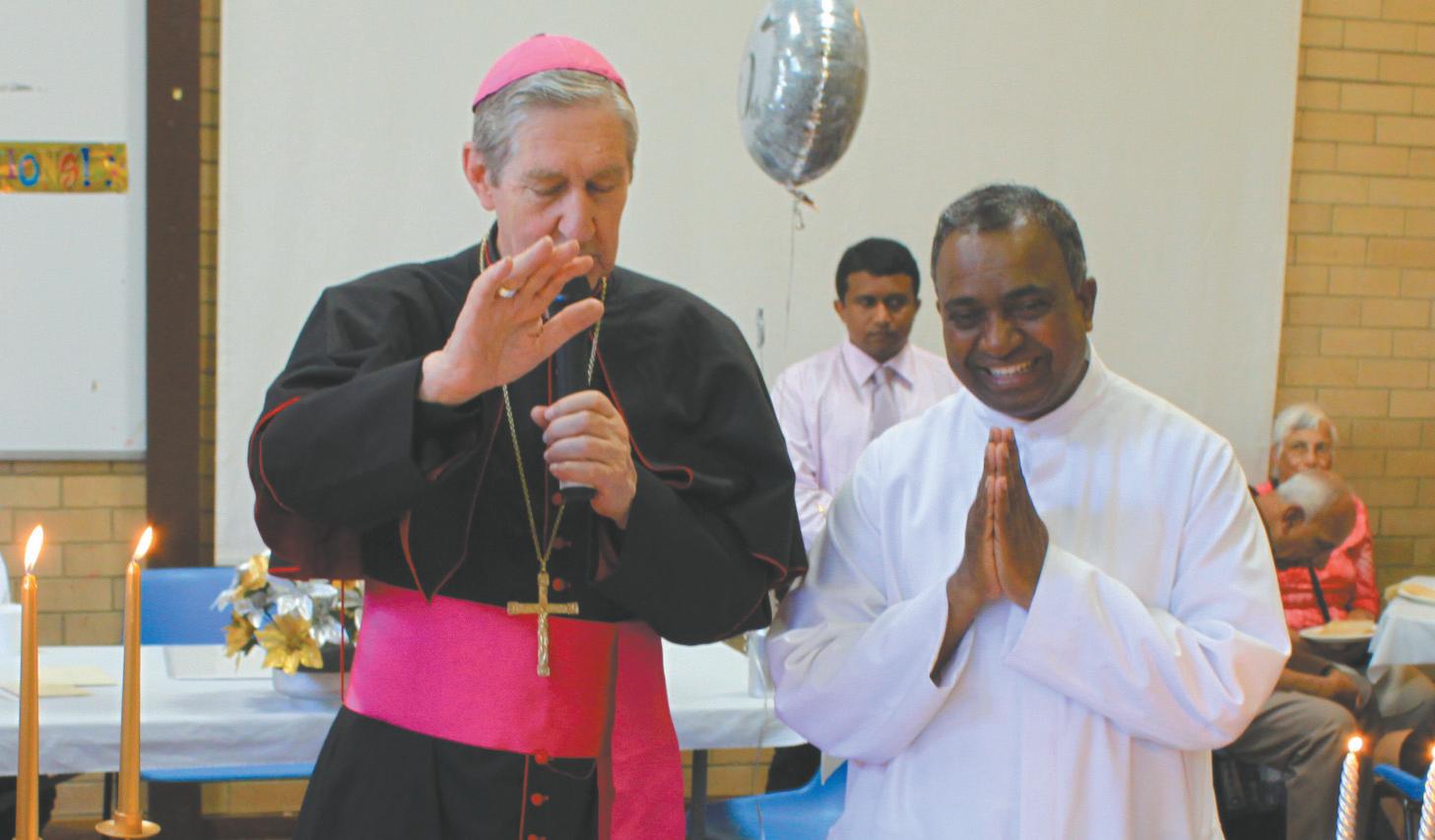
THERE was a touch of intimacy, a tender message of support from back home in India when St Jude’s, Langford parish priest Fr Terry Raj celebrated the 25th anniversary of his ordination to the priesthood on 6 December at Kalamunda parish.
Ordained a priest on the Feast of St Francis Xavier, Patron of the Missions, on 3 December 1984 in India, he came to the Archdiocese of Perth in 1996.
Along with Archbishop Barry Hickey, his Auxiliary Bishop Donald Sproxton and Fr Peter Toohey, Fr Terry’s nephew Rojesh from Bangalore also attended the Masss to represent the priest’s family back in India. Jojesh’s presence was deeply appreciated by Fr Terry, as, among other family members, Rojesh represented the priest’s brother who was too ill to travel for the anniversary but would have if he could.
Rojesh, by all reports, was keen to be involved as Fr Terry’s brother could not be.
Hundreds of parishioners of St Jude’s Parish gathered after weeks of preparation to acknowledge Fr Terry’s years of faithful service.
During the celebrations, the parish also to the opportunity
to personally acknowledge the Archbishop’s 25 years as a Bishop and 50 years as a Priest.
Parishioners from Fr Terry’s previous parishes of Whitford and Kalgoorlie also attended, plus those from surrounding parishes who had a fond knowledge of the priest.
Past principals of St Jude’s Catholic Primary School, representatives from Corpus Christi College, where Fr Terry is currently college chaplain, and members of Religious orders also attended.
The multicultural feast of food at the celebration was also indicative of the inclusiveness and warmth that is evident within the parish community.
A parishioner told The Record that St Jude’s is a very busy parish and Fr Terry “provides stability and pastoral care in so many ways”.
“He has a gift for making people feel welcome and at home and all with the utmost humility. Fr Terry, with his infectious smile, contributes greatly to this community,” the parishioner said.
“During the Mass the community asked for God’s blessings to support Fr Terry’s ongoing pastoral care of St Jude’s Parish.”


POPE Benedict XVI has set up a special commission to weigh the authenticity of the reported apparitions by the Virgin Mary at Medjugorje, according to Italian media reports.
The commission will reportedly be chaired by Cardinal Camillo Ruini, the retired Vicar of Rome, who has been a trusted ally of the Pope. The investigation would be carried out under the auspices of the Congregation for the Doctrine of the Faith. Bishop Ratko Peric of the Mostar diocese in Bosnia-Herzegovina, where Medjugorje is located, has strongly discouraged pilgrimages and warned the faithful against accepting the reality of the reported apparitions.


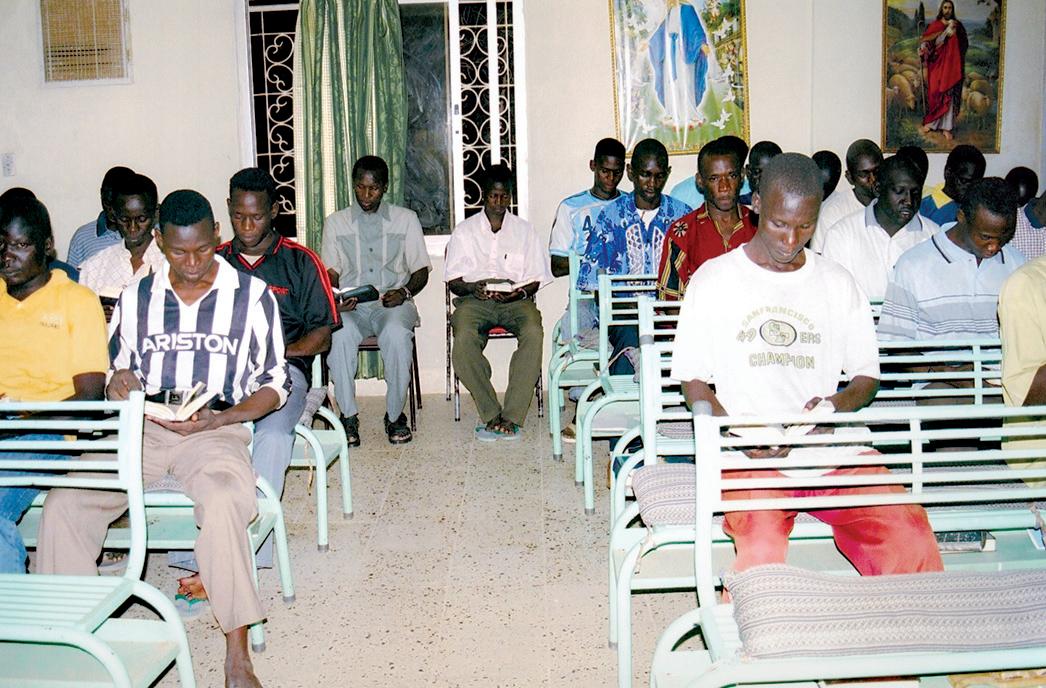


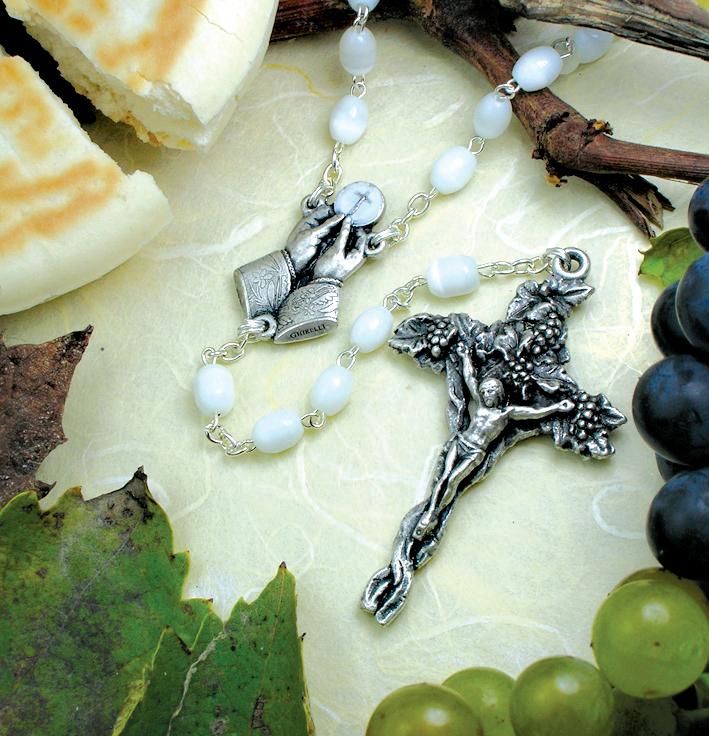


 BY ANTHONY BARICH National Reporter
BY ANTHONY BARICH National Reporter
WHILE praying once, an image popped into Ruby Soh’s head of a sea of buckets, each containing a Bible and basic necessities. At first confused as to what this meant, she felt God was calling her to take them to the poor in the Philippines, her country of birth.
Campaigning for buckets, Ruby – a member of the Disciples of Jesus Covenant Community based at Osborne Park – and her family raised 5000 buckets plus hundreds of Bibles, Rosaries and donations and visited three prisons in Manila and Cebu from 11-25 January.
The Bibles were in the local Talalog and Cebuano dialects, while the ‘buckets’ also contained some basic toiletries, according to their requests based on their needs, and some snacks, while the street children in the slums received footwear like thongs, or slippers as they’re called locally.
Since the Sohs and their companions left, Ruby has heard that attendance of street children at the local Disciples of Jesus events has doubled and continues to grow.
“It’s encouraging to know that people want to know more about God’s Word and want to have their Bibles at home. It appears Buckets for Jesus will have to keep going,” Ruby told The Record.
She said donations have continued to flood in since their return to Perth.
The adults in the slums requested food and basic necessities like rice, canned food and other basic requirements. Up to 70 per cent of the local population lives in slumlike conditions.
They found 1800 inmates (the local term used for people not yet convicted of what they’ve been charged with) aged 18 to over 60, crowded into cells no larger than 20 square metres that house up to 70 inmates each.
With no room to lie down and sleep, inmates took turns sleeping on the floor. Some had been there for up to 10 years – without trial.
Yet when Ruby, her husband Michael, son Mick, 20 and daughter Kamila, 18, visited the prisons, led by prison chaplain Fr Jose Aguas, they got the distinct sense that the inmates felt loved when previously they did not. The chaplain and the 20 others from around the world who ended up joining them on the prison mission led charismatic praise and worship, which proved so powerful it moved Ruby’s family to tears.
“The inmates felt so loved when we visited them, they told us that they saw God’s face in us and treasured their buckets with Bibles and basic necessities so much that they started reading them immediately and wore the Rosaries we gave them around their necks,” said Ruby, who was born in Dabao City in the Philippines.














“The praise and worship that followed from the inmates was so powerful, it brought us to tears … they sounded so spirit-filled that the praise and worship in our own church back in Perth would be put to shame.
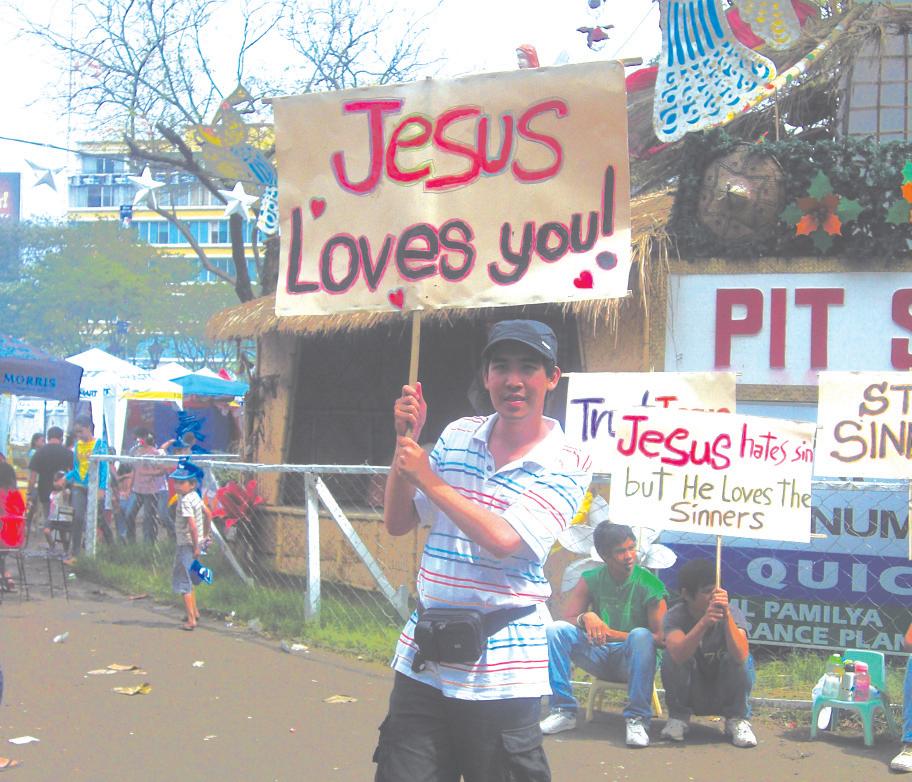






“It’s amazing how people in such miserable conditions can still praise the Lord mightily.”



Are you passionate about taking action for social justice?














Do you want to make a difference and inspire others to do the same?





Utilising their local contacts with the Philippines-based Disciples of Jesus community and the Missionaries of God’s Love Religious fraternity, they also gave the ‘Buckets for Jesus’ to the poorest of the poor living in the slums, to street children, orphanages, aged care centres and to hospitals.










Lucille Ebrado, the nanny of Ruby’s children while her family lived in Singapore where their children were born, is now the Manila director for global outreach organisaiton Youth With a Mission, who helped set them up to minister to the prisons.
There also appeared to be something distinctly providential in the way their mission panned out.
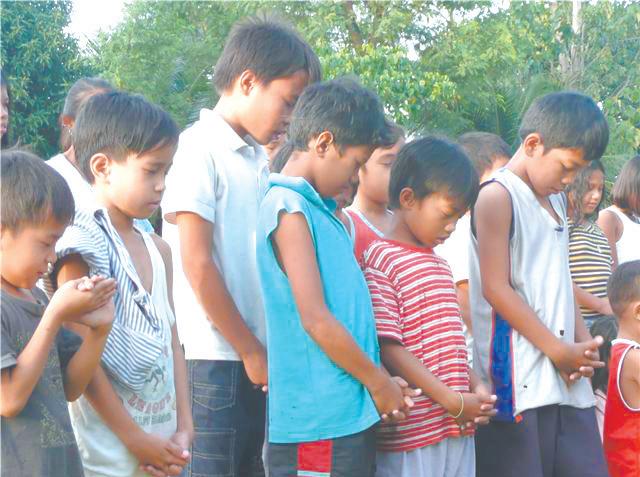





The officer who approved their request for excess baggage allowance resigned from the job with Malaysian Airlines once they arrived, yet all 10 pieces of their luggage worth 148kg went through free of charge. Despite her rusty
ability to speak local dialects of Tagalog and Cebuano, Ruby was able to give testimony to evangelise in the spoken dialects and the prisoners understood what she said.
“At first we were scared, but when we allowed the Lord to take over, He used our faith to move the hearts of the inmates and miracles
started to happen. The outpouring of the Holy Spirit led to the most powerful praise and worship we have ever experienced,” Ruby said.
“A leader in one village told us that they had been praying for Bibles and were amazed how God answered their prayers through us.”

WHILE divorce is on the rise – even among Catholics – and sensational, bitter split-ups is all we hear about from Hollywood’s offerings, Kalamunda parishioners Mary and Gerry Chesson have proven a rare gem.
The couple celebrated their 50th wedding anniversary on 27 February, with their whole wedding party in tow, bar the best man.
The Holy Family parishioners celebrated their anniversary at home in Kalamunda with family and friends, where parish priest Fr Paul Raj blessed the couple. Also present at the anniversary were the wedding party –bridesmaids Helen Golding [nee Raphael], Adrienne Cranfield and groomsman Barry Chesson. Best man Ashley Moldrich died in 2000.
They were married with nuptial Mass at St Mary’s, Leederville by their long time friend Fr Jim O’Brien [deceased]. Both Mary and Gerry were born in Perth and initially grew up not far from one another in Leederville parish, but did not know each other although their mothers did. They met through the Xaverian Club. Both were living back at home; Gerry in Kalamunda and Mary in Leederville after completing her nursing training at Princess Margaret Hospital.
After marriage, they rented in Subiaco while their house was built in Kalamunda where they remained for 47 years, recently moving a short distance to a smaller house.
Those early years were a wonderful time to raise a family: Catherine, Tim [deceased], Anne, Elizabeth and foster son Andrew. They were surrounded by close family and many friends from Church and community.
The girls attended St Brigid’s College and the boys Mary’s Mount and Mazenod College. Both parents were active in school affairs. The family was saddened by Tim’s death in 1985 in a traffic accident, aged 23. At this time, they received support and prayers from the wider family and church. After spending time away, all children returned to Perth to settle. Five grandchildren continue to give much joy and child minding duties.
In retirement, Gerry continues as an Acolyte, is active in the St Vincent de Paul Society and has been a mentor with the School Volunteer Programme at Kalamunda Senior High School for 20 years. Mary says she has not yet retired but carries on duties as usual including 28 years as a volunteer with Silver Chain Hospice Service.
NEARLY 2,000 people packed St Patrick’s Cathdral in Parramatta as Bishop Anthony Fisher OP was installed as the diocese’s third Bishop on 4 March.
Bishop Anthony was welcomed by local indigenous elders before entering the church’s small chapel to pray before processing to the new church for the installation Mass, streamed live in the World Youth Day social website xt3.com.
The installation of Bishop Anthony is the first time the installation of a Bishop has taken place at the newly rebuilt St Patrick’s Cathedral.
Destroyed by fire in February 1996, the Cathedral was rebuilt on the site and reopened in November 2003.
At 49, Bishop Anthony is the youngest bishop in Australia and was 42 when appointed as an Auxiliary Bishop to the Archdiocese of Sydney by Pope John Paul II in 2003.
He served in this role until January 8 this year, when Pope Benedict XVI named him as the

third Bishop of Parramatta and successor to Bishop Kevin Manning who was installed as the second Bishop of the Parramatta diocese in 1997 and is now retiring.
Members of the Sydney Youth
Orchestra together with the choir and schola of St Patrick’s Cathedral were part of the service along with soprano Amelia Farrugia; alto Nicole Seulders; tenor Andrei Laptev; and bass, David Russell.
A Dominican friar, renowned scholar, university lecturer, former lawyer and Doctor of philosophy and bioethics, Bishop Anthony is well known to thousands of the world’s youth as the approachable and popular organiser and coordinator of Sydney’s successful World Youth Day 2008.
The eldest of five, Bishop Anthony found himself torn between a career in law or serving God in the priesthood.
He chose the latter, joining the Dominicans - the Religious congregation also known as the Order of Preachers dedicated to preaching the Catholic faith in the context of a life of study, prayer and community - in 1985.
After his ordination he completed a Doctorate in bioethics at Oxford University, where he would return as a lecturer. He also lectured at Australian Catholic University and is Deputy Chancellor of the Catholic Institute of Sydney and Adjunct Professor at the University of Notre Dame Australia.





An initiative has been created to network secondary schools, staff and organisations across several dioceses in NSW, Victoria and the ACT who have woven youth ministry into their religious education courses.
Catholic Schools Youth Ministry Australia (CSYMA) was formed in 2007 by Peter Woods, director of mission at St Edmund’s College, Canberra and Missionaries of God’s Love Fr Chris Ryan, who toured Oceania with the World Youth Day Cross and Icon prior to WYD 2008.
The concept developed after WYD08 to make every Catholic school a centre for the “New Evangelisation” which both Popes John Paul II and Benedict XVI have referred to as an urgent necessity for the Church.
There are now 27 schools implementing the programme and several Catholic Education Offices have started to implement it across all schools in their diocese, including Sale, Sandhurst and Hobart. CSYMA promotes a four-phase approach to youth evangelisation incorporated into the heart of the school curriculum, with opportunities for catechesis that integrates spiritual growth, education in faith, service learning and leadership training.
These four phases are:
● Retreat and/or Youth Ministry experience
● Youth Ministry RE Curriculum Pathway
● Formation of a Senior Youth Ministry Team
● Providing broader Catholic Church and post-school oppor-


tunities for youth ministry and mission.
Over 140 key educators and youth ministry leaders attended a national staff conference at Marist Brothers College, Canberra on 3-4 September 2009, which forced teachers to re-think the concept of mission and the link between religious education and catechesis in Catholic schools, people who attended it reported.
“In the passion and confidence of the youth who shared their faith and life with delegates, we witnessed the fruits of this approach in promoting the integral formation and leadership of young people. I have returned to Parramatta with a renewed hope for the Church,” said Greg Wilson, a team leader of Religious Education in Parramatta’s Catholic Education Office.
Debra Sayce, Religious Education director of Catholic Education in WA, told The Record that while the concept was “fantastic”, it was not suited to WA, where there is a “very different idea of religious education”.
“You need a curriculum to sup-
port it; and it must be placed in curriculum context of the school,” she said, adding that most of the leadership development in Catholic schools in WA occurs outside school hours, with staff prepared to give of their time, like training special ministers of the Eucharist. “We have to follow the line of Australian Catholic Bishops Conference, and our bishops have signed off on the Youth Vision, and things must dovetail in to support those programmes. New things come and go. I always ask questions about sustainability – if a staff member who’s keen on it leaves, can it survive? If it’s part of the school culture then it may be able to be maintained.”
Mrs Sayce added that schools are free to take up the program, but outside of Religious Education time.
Two staff regional conferences are planned for 2010 – one at Mazenod College, Mulgave, Melbourne from 27-28 May and one in Sydney from 12-13 August, which Sydney Auxiliary Bishop Julian Porteous will address. A national student conference will also be held at St Francis Xavier College in Berwick, Melbourne from 9-11 September.
A CSYMA national youth ministry team will also be developed that consists of post-school youth visiting member schools giving presentations.
Catholic Mission has joined the party, taking on the role of being CSYMA’s National Partner as part of its call to form Australian Catholics for mission.
This has enabled CSYMA to expand its services to the Catholic Church nationally. Catholic Mission is included within the youth ministry curriculum and opportunities for Catholic Mission immersion experiences are promoted by CSYMA.
PRIME Minister Kevin Rudd’s announcement to use private hospital beds to treat people waiting lengthy times for public elective surgery will eventually help improve the performance of the nation’s hospital system, Catholic Health Australia (CHA) said.
CHA, representing public and private hospitals caring for one in 10 of all people in Australian hospital beds, said the Government’s health reform plan has merit, but the three-year delay in improving hospital performance while reform is bedded down can be avoided.
CHA welcomed the long-term plan to encourage networking of primary, acute and aged care services, but has urged the Government to put in place interim measures to improve hospital performance during the three-year-plus period it may take to implement reform plans.
As Rudd unveiled plans to strip the states of 30 per cent of their GST receipts to fund a federal takeover of State-run public hospitals, CHA chief executive Martin Laverty said the Health Reform plan offers potential for improving hospital services, particularly by using available private hospital beds to treat patients waiting for public elective surgery.
“But the proposal is yet to be agreed by State and Territory Governments. It may even need a referendum to be implemented,” he said, backing Rudd’s threat of a referendum if states do not hand over 30 per cent of their GST revenues to bankroll his plan.
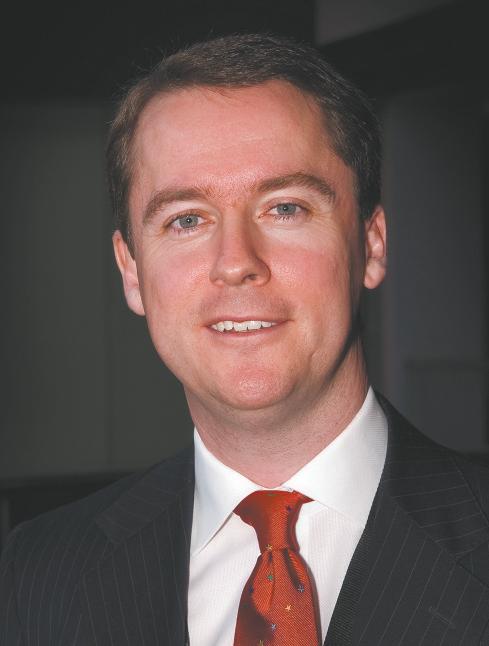
Martin Laverty
the reforms through,” Mr Laverty said.
“The interim solution should use available private hospital beds to treat patients the public system can’t. Having committed to do this in about three years’ time, why not start doing this now?”
CHA also endorsed per patient funding, under which many of its 75 public and private hospitals already operate.
Per patient funding has been on the table since COAG (Council of Australian Governments) agreed to it in March 2008, he said, yet “not a lot of progress has been made in setting this system up since that time”, and the agreement for Canberra to fund 60 per cent instead of 100 per cent leaves the opportunity for buck passing between governments to continue”.
“There are also checks and balances needed for per patient funding. Big public hospitals that treat many patients can do better than smaller public hospitals with few patients,” he said.








































In a 3 March letter to CHA members, Health Minister Nicola Roxon said the plan involves creating a single national network of public hospitals, instead of eight separate systems, to be funded nationally, ensuring “local experts with local expertise are making the important decisions for our local hospitals”.
“Quality control measures also need to be linked to each patient payment.”
“It will also be a big task to work out the boundaries of health regions into which patient funding will be directed. This will need a lot of thought, and consultation with often vocal local communities.”




People waiting on lengthy queues for public elective surgery will see no immediate improvement as a result of Rudd’s health reform blueprint, Mr Laverty said, adding that people waiting for surgery today may not see any on the ground changes for up to three years.
“The Prime Minister has an opportunity to announce an interim solution to cut hospital waiting times whilst working with State and Territory Governments to get
He warned that there is much hard work yet to do and “there are many who will need to be persuaded”.
“Patients don’t need to wait any longer. An interim plan to use available private beds to care for patients waiting for elective surgery would cut hospital waiting times now,” Mr Laverty said.











INDEPENDENT women’s think tank Women’s Forum Australia) welcomed Opposition Leader Tony Abbot’s announcement of a paid parental scheme which gives new parents six months paid leave at full salary.
WFA spokesperson Misty de Vries said: “We surveyed over 950 Australians in our 18 month long research project Reality Check: Work Life Balance and found that 47 per cent of our survey respondents had curtailed family desires due to other commitments; 16 per cent of respondents said that they had delayed having children and 18 per cent do not have children, despite the desire to have them.”
Reality Check research shows that paid parental leave is just the start. Australian women and their families also need initiatives that promote accessible/affordable childcare, flexible work practices, domestic support, positive relationships and family-friendly environmental design. These are all critical in reducing the conflict between work and family responsibilities. Reality Check will be launched in Melbourne on 25 March.
Being committed Religious will guarantee that God will bless the Sister Servants of Mary Immaculate with long life and vocations despite difficult times, Superior General of the first ‘active’ women’s congregation of the Ukrainian Greek Catholic Church told The Record
Rome-based, Canadian-born Sr Janice Soluk, the Superior General of the Sister Servants of Mary Immaculate, said during a pastoral visit to Perth last month that living the original charism of the Order “as committed Religious” with faith in God is the only sure means of survival.
The Order was co-founded in Lviv in 1892 by Blessed Josephata Hordashevska with Basilian Fr Jeremiah Lomnitskyj and diocesan priest and widower Fr Kyrylo Seletskyj to minister to the spiritual, moral, intellectual and social needs of Ukrainians, while also witnessing to God’s love and care.
They especially focused on the needs of children of poor families whose parents had to work, and the congregation grew quickly.
Within 10 years there were 100



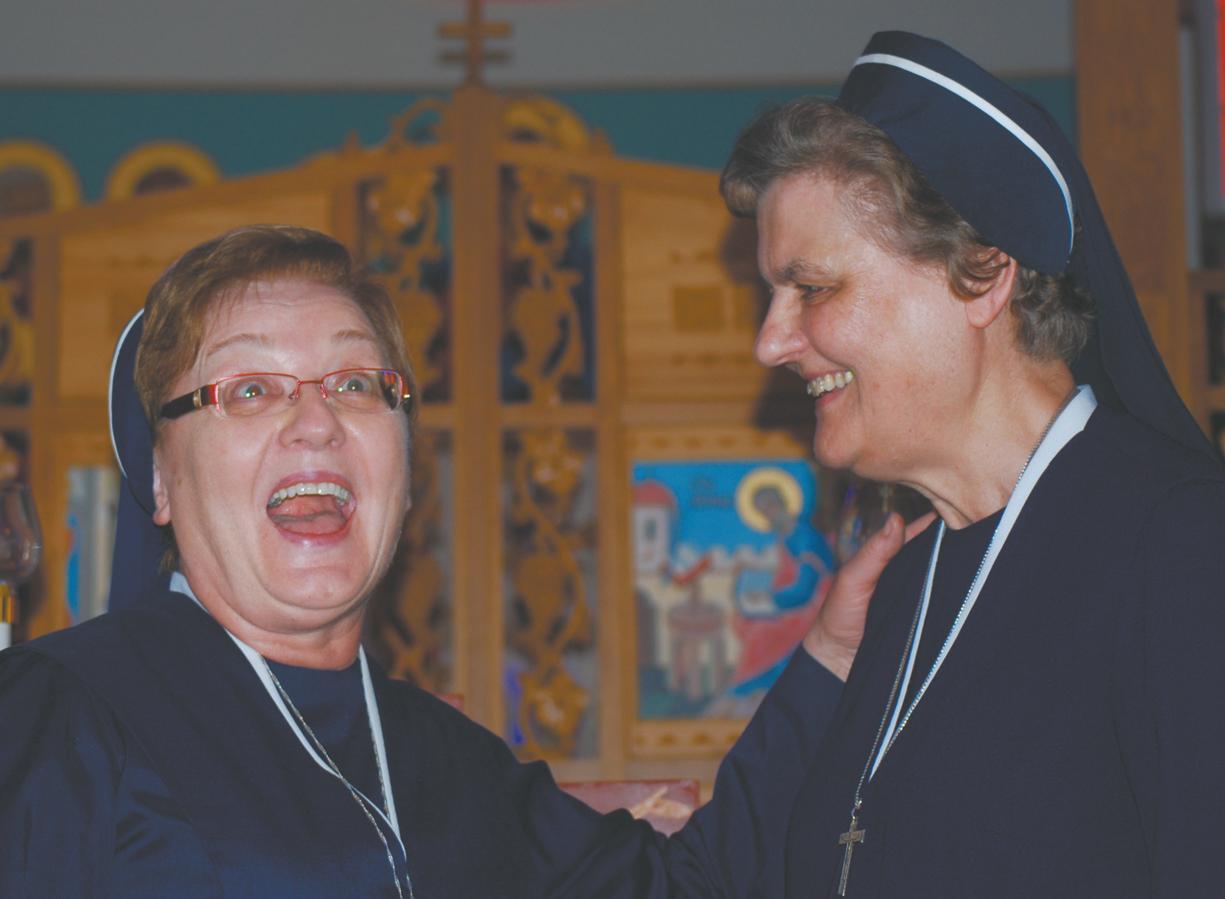
Sisters, and the first missionary Sisters were sent to Canada to follow the Ukrainian Catholic immigrants in 1902 as people were fleeing the poverty. In 1911, seven Sisters went to Brazil again following the Ukrainian immigrants.
When the Sisters first settled in the countries where the Ukrainians migrated to, there was very little infrastructure as those countries were in their infancy.
The Order started hospitals, day care centres and schools in Brazil and Canada, and again in the US when sent there in 1935 and to the former Yugoslavia in 1936. Today, while vocations are down, Brazil


remains its largest province, with 300 of the 750 Sisters based there.
Since the fall of Communism in 1989, it has taken the corrosive elements of the West 20 years to pervade the Ukraine while it took 100 years to do in Canada and Brazil, Sr Janice said.
Sr Janice says the Order, like all Religious congregations, are up against a formidable secular culture resistant to consecrated life.
Regardless, the global Ukrainian community needs them as much as ever, she said. And it is essential they survive.
“We must keep reminding ourselves why are we here. The major-






ity of parishioners today are elderly people, and though our first work was with youth, in our parishes there aren’t many,” she said.
While, as in the Roman Catholic Church, there has been an influx of youth seeking an authentic sense of Catholic culture, the lack of vocations since the fall of Communism impacts on their mission, as Sisters not of retirement age are rare and the young novices are not quite ready to lead.
Changes in demographics where they minister to has led to the closure of most of the schools they started, so the challenge is to find the children to minister to, according to their founding charism.
But hope remains. The faith is often strongest, she noted, where Christianity is being persecuted –like during Communism.
Today the persecution is there in a different form and the Spirit seems to be calling young Catholics to the ‘new movements’ rather than to consecrated life.
But Sr Janice believes there is still a place for her Sisters today.
“The Lord is in charge but it’s up to us,” she said.
“If we continue to live our charism and do what we’re supposed to do, we will continue to exist; if we go away from that and not be the committed Religious that we should be, then why would God want to call young women to this life? I believe that we have a future and we are, and will continue to, live our charism and our call to the Ukrainian Catholic Church, and there really is a need for us. God will turn things around.”





INDEPENDENT women’s think tank Women’s Forum Australia) welcomed Opposition Leader Tony Abbot’s announcement of a paid parental scheme which gives new parents six months paid leave at full salary.
WFA spokesperson Misty de Vries said: “We surveyed over 950 Australians in our 18 month long research project Reality Check: Work Life Balance and found that 47 per cent of our survey respondents had curtailed family desires due to other commitments; 16 per cent of respondents said that they had delayed having children and 18 per cent do not have children, despite the desire to have them.”
Reality Check research shows that paid parental leave is just the start. Australian women and their families also need initiatives that promote accessible/affordable childcare, flexible work practices, domestic support, positive relationships and family-friendly environmental design. These are all critical in reducing the conflict between work and family responsibilities. Reality Check will be launched in Melbourne on 25 March.
Being committed Religious will guarantee that God will bless the Sister Servants of Mary Immaculate with long life and vocations despite difficult times, Superior General of the first ‘active’ women’s congregation of the Ukrainian Greek Catholic Church told The Record
Rome-based, Canadian-born Sr Janice Soluk, the Superior General of the Sister Servants of Mary Immaculate, said during a pastoral visit to Perth last month that living the original charism of the Order “as committed Religious” with faith in God is the only sure means of survival.
The Order was co-founded in Lviv in 1892 by Blessed Josephata Hordashevska with Basilian Fr Jeremiah Lomnitskyj and diocesan priest and widower Fr Kyrylo Seletskyj to minister to the spiritual, moral, intellectual and social needs of Ukrainians, while also witnessing to God’s love and care.
They especially focused on the needs of children of poor families whose parents had to work, and the congregation grew quickly.
Within 10 years there were 100




Sisters, and the first missionary Sisters were sent to Canada to follow the Ukrainian Catholic immigrants in 1902 as people were fleeing the poverty. In 1911, seven Sisters went to Brazil again following the Ukrainian immigrants.
When the Sisters first settled in the countries where the Ukrainians migrated to, there was very little infrastructure as those countries were in their infancy.
The Order started hospitals, day care centres and schools in Brazil and Canada, and again in the US when sent there in 1935 and to the former Yugoslavia in 1936. Today, while vocations are down, Brazil


remains its largest province, with 300 of the 750 Sisters based there.
Since the fall of Communism in 1989, it has taken the corrosive elements of the West 20 years to pervade the Ukraine while it took 100 years to do in Canada and Brazil, Sr Janice said.
Sr Janice says the Order, like all Religious congregations, are up against a formidable secular culture resistant to consecrated life.
Regardless, the global Ukrainian community needs them as much as ever, she said. And it is essential they survive.
“We must keep reminding ourselves why are we here. The major-






ity of parishioners today are elderly people, and though our first work was with youth, in our parishes there aren’t many,” she said.
While, as in the Roman Catholic Church, there has been an influx of youth seeking an authentic sense of Catholic culture, the lack of vocations since the fall of Communism impacts on their mission, as Sisters not of retirement age are rare and the young novices are not quite ready to lead.
Changes in demographics where they minister to has led to the closure of most of the schools they started, so the challenge is to find the children to minister to, according to their founding charism.
But hope remains. The faith is often strongest, she noted, where Christianity is being persecuted –like during Communism.
Today the persecution is there in a different form and the Spirit seems to be calling young Catholics to the ‘new movements’ rather than to consecrated life.
But Sr Janice believes there is still a place for her Sisters today.
“The Lord is in charge but it’s up to us,” she said.
“If we continue to live our charism and do what we’re supposed to do, we will continue to exist; if we go away from that and not be the committed Religious that we should be, then why would God want to call young women to this life? I believe that we have a future and we are, and will continue to, live our charism and our call to the Ukrainian Catholic Church, and there really is a need for us. God will turn things around.”





The renovation of the Church in Australia will come through the laity. That the Church is in need of renovation cannot really be in any serious doubt. How it will come about is an entirely other affair.
To baldly state the above can, in the Church in today’s Australia, be interpreted as asking for trouble. On the one hand it may be imagined by some that such a statement seeks to sideline or make the witnesses of priesthood and religious life irrelevant - and this in a country which finds it almost impossible to imagine how they could be. It could also be interpreted as saying that the renovation of the Church cannot be accomplished by priests, bishops and religious and that it can only be accomplished by the lay baptised. The second interpretation begins to approach the truth. However the real truth is no one section of the Church can successfully carry out the the very large task of renovation that is so clearly needed on its own, even if such a thing were possible to organise. The renovation of the Church can only come about through the unity of lay, religious and clergy living their respective vocations to the best of their ability. All are essential.
Nevertheless, what many in the Church appear to miss is that the lay vocation is essential to transforming the Church, in terms of what it is, how it is perceived and how it carries out its divine mission in Australian life.
PO Box 75
Leederville WA 6902 cathrec@iinet.net.au
Tel: (08) 9227 7080
Fax: (08) 9227 7087
Statisticians who study the Church and religion are in no doubt as to the trends that have been occurring in Catholic pews for decades. It is transparently clear that the young have been leaving the Church in droves. With relatively rare exceptions the greying of the pews, as the phenomenon has been occasionally referred to, is obvious. Published studies of the experience of the Catholic education process, to take only one example, show quite clearly that the overwhelming majority of all participants are nominal Catholics who are themselves an expression of the increasingly secular nature of our society.
This statement is not to apportion blame or to seek to pick a fight but to state openly what everyone knows to be true. These are excellent people but they are excellent people for whom - in the clear majoritythe Catholic Church is hardly relevant in any imaginable sense. Given that the young are overwhelmingly attracted away from the Church and its profound spiritual realities because it does not seem as interesting or relevant in comparison to what a bedazzling culture dominated by affluence, possessions, status, technology and decreasing moral constraints can offer them really also speaks volumes about the experience they leave behind.
The departure of large numbers from the religious faith of generations may or may not be called a crisis. Perhaps a better and more accurate description would be to say that this phenomenon appears to be part and parcel of a wider purification of the Church. However if it is, it is a purification which is also occurring in a post-Christian society characterised by decreasing standards of behaviour towards everyone else, from the unborn up to and including the sick and dying.
The key to the renovation of the Church, the future and to the reChristianisation of our society - which could quite conceivably take anywhere from 50 to 150 years - is to be found far less in formal programmes of evangelisation and in committee meetings than it is within the intimate confines of the family and of marriage. When this editorial began by saying that the renovation of the Church will come from the laity it meant that until lay Catholics are seeking to seriously live their vocations as family members, as spouses and as contributing members of society the Church will very likely be going nowhere. One can never, of course, predict Providence or seek to limit the action of God, but just as clearly God expects the members of the Church to carry out the work that is their baptismal responsibility according to his plan rather than waiting for Him to part the clouds and do it for us.
Faith is infectious. The young have no-one else in the world in the beginning of their lives to raise, guide and educate them in the most fundamentally important of things than their parents. For too long, the basket case that has become Catholic marriage in Australia today has relied on others, such as Catholic schools, to do its job for it. To successfully raise strong, free and independent children who will not be seduced by the merde that is television or the Internet and the like in Australia, Catholic parents must treat their marriage as if how they live it actually is vitally important. The good news is that as a greater understanding of the reasons for the departure of the young from Catholic family life and from the Church has developed, so have the resources.
One hour a week in an obligatory period of worship or attendance at Mass twice a year is a formula for disaster when it comes to children and families. The first antidote to a post-Christian society’s attempt to seduce our children, our families and our Church, is serious religious commitment from both mother and father, the living witness of their example, the demonstration that parents really do believe in prayer, the constantly demonstrated lesson that to these parents the Church is not an obligation but the happiest part of their lives and that following Christ, as Archbishop Chaput put it so eloquently last week, is not “a private idiosyncrasy that must be prevented from becoming a public nuisance.”
When Catholic marriages start taking their baptismal vows and the vows of marriage seriously, they will be unleashing the greatest force for good ever seen in Australia. It’s that simple.
strongly supported by two guitars and a hand drum.
The singing of the Our Father was made relevant musically by the inclusion of “oooosh-oooosh” half-way through this prayer. At the conclusion, things got even better there were four aaahs before the Amen!
The final hymn uplifted us by its edifying account of “building a bridge of love over a sea of hate” and although this was “gonna” be difficult, if we all pitched in “we would succeed, and the crowning inducement – “God would be smiling from ear to ear.”
Your editorial of 17 February on the text of the Mass concluded that the train was leaving the station and we had best be on board. That sounds like a good advice if you know where the train is heading, but not otherwise. We do not know what effect the new translation will have given the reception it has so far received. As for the “serious theological problems” of the present translation, as the report of Anthony Barich mentioned, that sounds like window dressing for the new translation.
It sounds as though the Latin text is the ultimate expression of the mystery we celebrate. This is also an assumption, which is doubtful.
Since English, not Latin is now the universal language of our world, it would seem more useful to concentrate our resources on producing worthy celebrations in that language.
Finally, if the telecasts of the Christmas Mass from the Vatican is the height of liturgical participation, give me the present parish Mass in English.
Fr Noel J Fitzsimons Brunswick WAThus, a Hymn Sandwich –Q.E.D.
Dian Fox Bicton WAPrime Minister Kevin Rudd has raised the important issue of our population growth. By 2050 we will likely have a population of 35 million but with far fewer of working age to support the retired and needy – from ratio of 5 to 1 retired today, 2.7 to 1 retired, then.
Migration alone, with its difficulties, can never solve this problem, which is mainly due to our birth rate – much lower than needed for natural growth and replacement.
We badly need a national debate on this matter but the politicians and media evidently will not face it. Is it because they fear the screams of the feminists and libertarians’ claiming a woman’s “right” to kill her unborn child?
No one has the “right” or “free choice” to do evil contrary to natural law (to lie, to steal, to kill etc) this is self evident to all decent peoples.
nity of human life. Shame, shame! Instead of a culture of life based on the rights and duties of all in a civilisation of justice and love, the secularists want a “society” based on greed, lust, free choice, and the power of the dominant social group. Feminists want a new type of totalitarianism.
Eighty seven per cent of all Australians believe we should reduce the number of abortions and 98 per cent think women should, at least, be advised of the health risks (physical, emotional and mental) involved with abortions. This is all well documented and we badly need to debate the matter in a collapsing civilisation so well described by the media today.
Fr Bernard McGrath BendigoIt is years since I sent The Record a letter. I now feel a duty to write after watching an ABC TV report on the financial crisis where an eminent economist Professor Schitler at Yale University gave a short review of the situation in the US and was asked for an opinion on the present, almost runaway surge of Australian estate prices, saying that the expectation of continuing up pricing is the very way for the inevitable collapse and the consequent ruins for people who are involved, i.e. home owners or younger hopefuls.
The credit society fosters a universal mentality of financial feudalism - that’s where we now are.
I am now 85 years of age and have seen quite a bit of life. Independence, to me, is of primary importance. I believe it to be crucial for our social good, leading to peace and stability of families and society.
John Rayner’s comments re music during Mass and the “Hymn Sandwich” (The Record 24 February) touched a chord.
Recently I attended Sunday Mass in a large country town, down south. The choir was a very consistent group who sang all four hymns with unmodified gusto, even the communion hymn – Be still and know that I am God –

The App itself contains a complete Roman Catholic Missal, complete with all the readings for each day of the year (see note below) and the order of the Mass, as well as a comprehensive Catholic Prayer book and a daily scripture verse generator (Our Daily Bread).
The Liturgical Calendar displays all of the liturgical seasons and is colour coded based on liturgical season.
It shows Holy Days of Obligation, Solemnities, Major
The unborn child has all the genes at conception that it will ever need for full development, and its right to life is prior to any other claims of “rights” to choice or convenience.
The pressure of politicallyactive feminists (Emily’s List) and other secular humanists to legalise the killing of the unborn (even to near-birth as in Victoria) is a bad law – one of the worst in the world and is the beginning of the end of the respect for the prime dig-
Feasts, Saints, etc. The calendar is currently available for years 1990 – 2050!
I’ve been using the iMissal (a screenshot is pictured at right) for a little over a year now and have found it to be particularly useful in a number of contexts: from reminding me to do a little pre-reading before going to Mass, to simply being able to find the right prayer at the right time.
Of the Catholic Apps available on the iPhone I intend to start this series with the one I use the most.
The iMissal costs $5.99 from the App store, which really is a bargain, especially when you consider that you can pay upwards of $60 for a regular weekday Missal. I do however wonder what people are going to think when I pull out my iPhone in Mass? They’ll probably think I’m texting or emailing while I should be praying...
Just a brief note of caution: the liturgical texts provided in iMissal are used with the permission of the Confraternity
The commercialising of women is one generally destabilising force which has led many of the best and most intelligent away from the caring professions such as health and teaching, to money making, i.e. materialism
To my grandchildren, I have developed a saying ‘Stay out of debt and keep the Faith’ a sure, near enough guide for health and happiness.
Peter Bertola Esperance WA
of Christian Doctrine and the International Committee on English in the Liturgy. They are the official texts approved for use in the dioceses of the United States by the US Conference of Catholic Bishops so sometimes you may find that there are occasional differences between what is on the app and what is read during Mass here in Australia.
From the year 800 onwards, traces of permanent deacons become a rarity. Pope Gregory VII (10201085) was elected pope while still a deacon. St Francis of Assisi was a deacon. But, during the Second Vatican Council, the bishops had little historical data and little knowledge of its actual implications, beyond that of the early times in the life of the Church. And the Church had changed considerably since then.
As a recent development in the life of the universal Church, it might have been expected, however, that the trial period of the diaconate might begin to offer some lessons in two key areas:
first, at the level of general principles, that is, the enlightening tradition of the Church particularly in its early times and the current and future sense or practical application of the deacon’s identity in pastoral ministry.

The permanent diaconate: Its genesis, growth, issues.
By Anthony Paganoni CSDuring a recent workshop held near Rome in 2008, Alphonse Borras, professor of Canon Law and theologian at the faculty of Louvain in Belgium (rather revealing is the title of his book, Le diaconat au risqueé de sa nouveauté, 2007) stated rather emphatically that, while the doctrinal elements are in place, perhaps their coherent practical functions are not reflected in pastoral programs. The symposium which was attended by 180 participants, with 50 mostly married deacons, tackled a twofold question:
• Is it possible to clarify for the whole church the importance and significance of the diaconate?
• As a consequence is it possible to devise precise tools for use during the process of their training?
A consensus emerged during this workshop that in the life of the church very little is said of the diaconate, with the result that its “public image” is commonly understated, and too few support systems are offered. And yet there are stories worth reporting to the Catholic and lay media.
The most widely distributed mission journal Mondo e Missione (AugustSeptember 2009) reported on Charles, the first permanent deacon to be ordained for the Archdiocese of Milan. He is from Nigeria.
The blurred ID card for deacons leaves the door open for endless nicknames: ‘half-priest’ or ‘super-layman’? ‘Excellent and reliable altar boy’ or ‘marriage counsellor’? ‘Welfare agent’, ‘administrator’, ‘handy-man’? And so on. It is very difficult for Catholics to differentiate between what a deacon does and what a committed lay Catholic may likewise do. It seems to matter very little that the Catechism of the Catholic Church (no. 1563) states: “Holy orders is the sacrament through which the mission entrusted by Christ to His apostles continues to be exercised in the Church until the end of time: thus it is the sacrament of apostolic ministry.” It includes three degrees: episcopate, presbyterate, and diaconate.
We seem to be far from the sacred character which is conferred upon a deacon at its ordination: permanent servants in the footsteps of the Servant Christ within a Church community, herself at the service of the world.
Time, Hollywood and popular myth have colluded to obscure much about...
 By Fr Sean Fernandez
By Fr Sean Fernandez
It might seem tempting to argue that the Crusades occurred in a more violent world than our own. It is not a position that, I think, can be maintained. Check a newsfeed or, if you must, read a newspaper – violence and bloodshed aplenty. Indeed the weaponry we have at our disposal is far more destructive than that of a millennium ago. The difference may be that most of us are not directly involved in violence; it is the preserve of professionals, wielded by police, employed on our behalf by professional soldiers in distant lands.
In the mediaeval period it was ubiquitous, especially as structures of governance formed, broke down and reformed.
Historians have described the orgy of destruction which engulfed parts of Europe as local lords struggled for power. The Church was very concerned with trying to limit, if not eliminate, violence – Church leaders tried to ban fighting on holy days and during penitential periods; codes of conduct were developed enjoining warriors to protect women, children, the defenceless, clergy and Religious. Chivalry was born of the Church’s attempt to catechise a warrior class. Does this not contrast with our easy acceptance of ‘collateral damage’ in modern warfare? The mediaeval Church sought to bring about a more peaceable society, but how could the nobles be expected to beat their swords into ploughshares when skill at arms was integral to their sense of identity?
The Crusades, therefore, represented
Let the rivers all run dry, Let every fish in every ocean
Suffocate and die, Let all forests burn and smoulder
And every blade of grass that’s green Curl up and wither.
Let every seeing bird go blind.
Let the sun go black and hide,
Snuff the stars out, every one,
Let the cities fall and moulder,
Let every touching hand go numb.
Let the fleeing cosmos halt,
Let each constellation cease,
Let every crawling insect feed
Upon the dying - banish peace.
Make their art a ceaseless babble,
Make every thought known to all,
Make their science end in failure.
Give them pride before a fall.
Give each child undying fear, Resentment for his parents’ hurts,
Real or imagined – it matters not,
And make each bride a tarty flirt.
Let every whispered absolution
End in doubt and confusion,
Let every race destroy the other
But know they’re right,
And make each mother
Hate her child, rue the day
That she conceived;
Scratch the name from her heart.
Leave no more creeds to be believed.
End light, bring on darkness, Extinguish air, erase the sky,
Empty every flowing, tided bay.
I hate them all, every one,
I do not serve - nor will they.
- Edward Ahern, inspired by a poem by WH Auden
a radical shift in teaching and practice for the Church. What lay behind this? In this article, I, very much an amateur, seek to understand a little better the birth of Crusading and to clear up certain misconceptions. I am not arguing that the Western view of Islam was correct; I am seeking to understand what took place.
If you want to do further reading I would recommend any number of very interesting books by Jonathan Riley-Smith including his lauded The Crusades; John V. Tolan’s The Saracens explores Christian perceptions of the Arabic invaders; Norman Housley’s Contesting the Crusades offers a useful survey of Crusade - historiography.
I suspect that some of our contemporaries have a view of noble Saracens or Arabs reclaiming what was theirs from savage Christians. Or they may think of rapacious Western magnates trying to carve out territory for themselves in the East. Both views are unfortunate caricatures. The Arabs were foreign invaders, admittedly part of a long line of invaders. Much of the Levant had come under Roman rule around 63 BC. In the AD 135 a Jewish revolt against Roman rule was crushed, places sacred to Jews and Christians were desecrated and Hadrian renamed the city Aelia Capitolina (see Henry Chadwick’s The Church in Ancient Society). Constantine restored holy sites to the Christians and built the first great church on the burial place of Christ around AD 326. After the final division of the Roman Empire in AD 395, the city came under the Eastern Roman or Byzantine Emperor. Byzantium, the great Christian kingdom, with its centre in Constantinople was to become something of a bulwark against growing Muslim powers.
The Persians had occupied Jerusalem for a short while in the sixth century and much Christian blood had been spilt before it had been wrenched back from them. But in 638 it fell to the Saracens. Christendom made the psalmist’s lament its own: ‘O God, the heathen have come into thy inheritance; they have defiled thy holy temple; they have laid Jerusalem in ruins. They have given the bodies of thy servants to the birds of the air for food, the flesh of thy saints to the beasts of the earth.’ (Psalm 79). In 1009 the Holy Sepulchre was vandalised and Christian pilgrims were attacked. There was fulmination against this, but nothing else besides though it did did provide fuel for the crusading fire. When the Crusades were finally launched it was in response to an aggressive drive into Byzantine territory by the newly ascendant Turks in the eleventh century. The Byzantine Emperor appealed to his Christian brothers for aid and the Popes responded. Pope St Gregory VII proposed a military response, but it was Blessed Urban II in 1095 who galvanised the West with a call to save the Christian East and liberate the Holy Places.
Churchmen saw this as an opportunity to channel the energy of their martial contemporaries into a good cause. Preachers called on the milites to fight for their brothers and sisters in Faith rather than amongst themselves. The Crusades were a golden opportunity to turn the warrior into a warrior-pilgrim and penitent. This brings us to an interesting aspect of the crusading movement and that is the spirituality which underlay it, a spirituality which RileySmith has documented in many works. The Crusades required a great commitment of resources in addition to the risk to life and limb. There was little material benefit to be expected; the Crusading nobles in the main hoped to return to their homes in the West, not carve out fiefdoms in the east.
The Crusades allowed them to put their skills at the service of God and his Church and to hope thereby that their sins might be forgiven and that they might attain salvation. Shocking, isn’t it? They were not, on the whole, venal, grasping men.
The Crusades were penitential pilgrimages; the Crusaders were enjoined to have the right disposition and were called
on to embrace the sacrifices required by the pilgrimages for the good of their souls. They had to enter into the work motivated by love of God and their neighbour; the Crusaders also entered a regimen of prayer, fasting and other penances on top of all the normal hardships of warfare in foreign lands. In 1147 Louis VII prepared for his imminent departure with a brief sojourn in a leper house; this, in an age when leprosy was dreaded, was an almost incredible act of penance. Louis IX appointed friars to enquire into complaints against his own officials before leaving on crusade (The Crusades, Christianity and Islam by J. Riley-Smith). The two kings felt the need to embark on the dangerous and arduous journey with the right spirit.
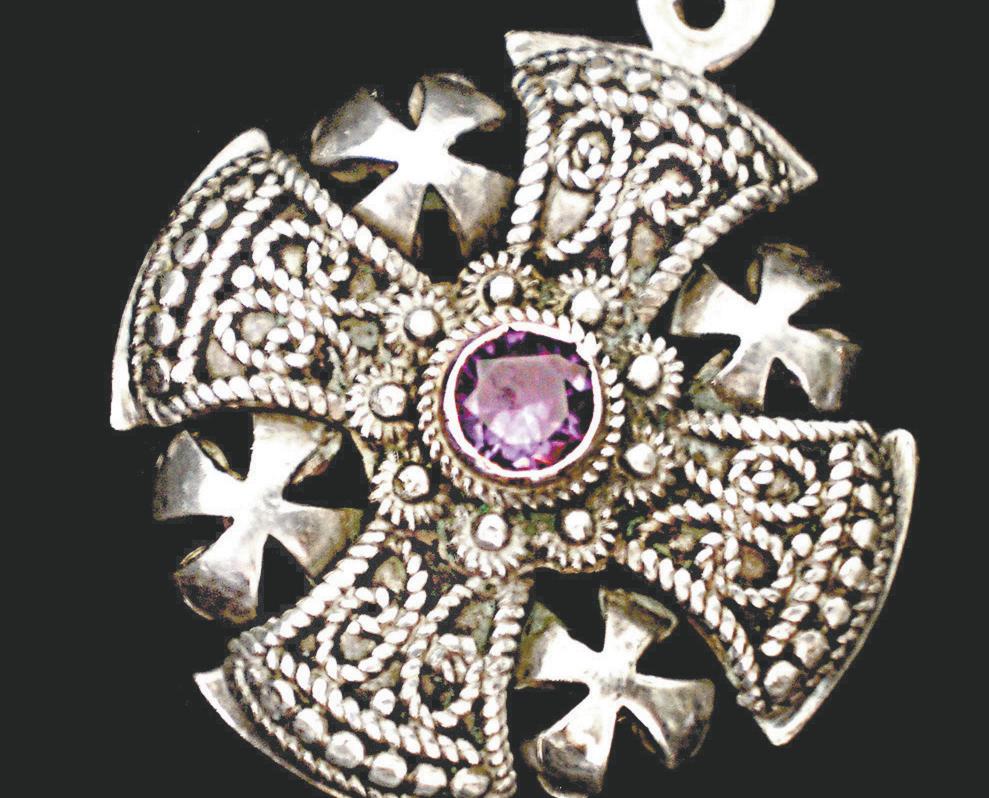
I am painting an over-rosy picture perhaps, but deliberately in order to counter prejudices.
There were saints amongst the Crusaders as well as discreditable men. Their behaviour on the march and in battle was not as it should have been, but better than it might have been. Alas, anti-Semitism seems to have been a real aspect of the crusading movement and I shall discuss this in a later article. But the hardships to which the Crusaders exposed themselves in the ‘service of the Cross’ shame us who can more peaceably live out our vocations.
There were many Crusades undertaken over centuries and the legacies of some were more grievous than others. None, however, matched the success of the first which led to Christian reconquest of the Holy Land and the establishment of the crusader kingdoms. These were to fall before resurgent Arab armies. In 1291 when the crusader Kingdom of Jerusalem fell, Riccardo of Montecroce wrote of the beauty of Baghdad yet of his sadness at ‘the massacre and capture of the Christian people.
“I wept over the loss of Acre, seeing the Saracens joyous and prospering, the Christians squalid and consternated: little children, young girls, old people, whimpering, threatened to be led as captives and slaves into the remotest countries of the East, among barbarous nations” (quoted in John V Tolan’s Saracens).
Can you not see why the Christians of the West saw it as their duty to rescue not only the places where the Saviour lived, died and rose from the dead, but also their coreligionists from ‘pagan’ hands?
The Crusades have to be understood as creations of a particular time and place. It is not imagery appropriate for our milieu or for contemporary conflicts. The Church today is engaged in dialogue with Muslim scholars and nations. This is not without its difficulties, but Pope Paul VI bids us in Ecclesiam Suam to take the way of dialogue, a dialogue which “must take cognizance of the slowness of human and historical development, and wait for the hour when God may make it effective. We should not however on that account postpone until tomorrow what we can accomplish today. We should be eager for the opportune moment and sense the preciousness of time. Today, every day, should see a renewal of our dialogue. We, rather than those to whom it is directed, should take the initiative.” Our time presents us with different opportunities and challenges from that of our forebears. We should not be supercilious, but grateful.
From the year 800 onwards, traces of permanent deacons become a rarity. Pope Gregory VII (10201085) was elected pope while still a deacon. St Francis of Assisi was a deacon. But, during the Second Vatican Council, the bishops had little historical data and little knowledge of its actual implications, beyond that of the early times in the life of the Church. And the Church had changed considerably since then.
As a recent development in the life of the universal Church, it might have been expected, however, that the trial period of the diaconate might begin to offer some lessons in two key areas:
first, at the level of general principles, that is, the enlightening tradition of the Church particularly in its early times and the current and future sense or practical application of the deacon’s identity in pastoral ministry.

The permanent diaconate: Its genesis, growth, issues.
By Anthony Paganoni CSDuring a recent workshop held near Rome in 2008, Alphonse Borras, professor of Canon Law and theologian at the faculty of Louvain in Belgium (rather revealing is the title of his book, Le diaconat au risqueé de sa nouveauté, 2007) stated rather emphatically that, while the doctrinal elements are in place, perhaps their coherent practical functions are not reflected in pastoral programs. The symposium which was attended by 180 participants, with 50 mostly married deacons, tackled a twofold question:
• Is it possible to clarify for the whole church the importance and significance of the diaconate?
• As a consequence is it possible to devise precise tools for use during the process of their training?
A consensus emerged during this workshop that in the life of the church very little is said of the diaconate, with the result that its “public image” is commonly understated, and too few support systems are offered. And yet there are stories worth reporting to the Catholic and lay media.
The most widely distributed mission journal Mondo e Missione (AugustSeptember 2009) reported on Charles, the first permanent deacon to be ordained for the Archdiocese of Milan. He is from Nigeria.
The blurred ID card for deacons leaves the door open for endless nicknames: ‘half-priest’ or ‘super-layman’? ‘Excellent and reliable altar boy’ or ‘marriage counsellor’? ‘Welfare agent’, ‘administrator’, ‘handy-man’? And so on. It is very difficult for Catholics to differentiate between what a deacon does and what a committed lay Catholic may likewise do. It seems to matter very little that the Catechism of the Catholic Church (no. 1563) states: “Holy orders is the sacrament through which the mission entrusted by Christ to His apostles continues to be exercised in the Church until the end of time: thus it is the sacrament of apostolic ministry.” It includes three degrees: episcopate, presbyterate, and diaconate.
We seem to be far from the sacred character which is conferred upon a deacon at its ordination: permanent servants in the footsteps of the Servant Christ within a Church community, herself at the service of the world.
Time, Hollywood and popular myth have colluded to obscure much about...
 By Fr Sean Fernandez
By Fr Sean Fernandez
It might seem tempting to argue that the Crusades occurred in a more violent world than our own. It is not a position that, I think, can be maintained. Check a newsfeed or, if you must, read a newspaper – violence and bloodshed aplenty. Indeed the weaponry we have at our disposal is far more destructive than that of a millennium ago. The difference may be that most of us are not directly involved in violence; it is the preserve of professionals, wielded by police, employed on our behalf by professional soldiers in distant lands.
In the mediaeval period it was ubiquitous, especially as structures of governance formed, broke down and reformed.
Historians have described the orgy of destruction which engulfed parts of Europe as local lords struggled for power. The Church was very concerned with trying to limit, if not eliminate, violence – Church leaders tried to ban fighting on holy days and during penitential periods; codes of conduct were developed enjoining warriors to protect women, children, the defenceless, clergy and Religious. Chivalry was born of the Church’s attempt to catechise a warrior class. Does this not contrast with our easy acceptance of ‘collateral damage’ in modern warfare? The mediaeval Church sought to bring about a more peaceable society, but how could the nobles be expected to beat their swords into ploughshares when skill at arms was integral to their sense of identity?
The Crusades, therefore, represented
Let the rivers all run dry, Let every fish in every ocean
Suffocate and die, Let all forests burn and smoulder
And every blade of grass that’s green Curl up and wither.
Let every seeing bird go blind.
Let the sun go black and hide,
Snuff the stars out, every one,
Let the cities fall and moulder,
Let every touching hand go numb.
Let the fleeing cosmos halt,
Let each constellation cease,
Let every crawling insect feed
Upon the dying - banish peace.
Make their art a ceaseless babble,
Make every thought known to all,
Make their science end in failure.
Give them pride before a fall.
Give each child undying fear, Resentment for his parents’ hurts,
Real or imagined – it matters not,
And make each bride a tarty flirt.
Let every whispered absolution
End in doubt and confusion,
Let every race destroy the other
But know they’re right,
And make each mother
Hate her child, rue the day
That she conceived;
Scratch the name from her heart.
Leave no more creeds to be believed.
End light, bring on darkness, Extinguish air, erase the sky,
Empty every flowing, tided bay.
I hate them all, every one,
I do not serve - nor will they.
- Edward Ahern, inspired by a poem by WH Auden
a radical shift in teaching and practice for the Church. What lay behind this? In this article, I, very much an amateur, seek to understand a little better the birth of Crusading and to clear up certain misconceptions. I am not arguing that the Western view of Islam was correct; I am seeking to understand what took place.
If you want to do further reading I would recommend any number of very interesting books by Jonathan Riley-Smith including his lauded The Crusades; John V. Tolan’s The Saracens explores Christian perceptions of the Arabic invaders; Norman Housley’s Contesting the Crusades offers a useful survey of Crusade - historiography.
I suspect that some of our contemporaries have a view of noble Saracens or Arabs reclaiming what was theirs from savage Christians. Or they may think of rapacious Western magnates trying to carve out territory for themselves in the East. Both views are unfortunate caricatures. The Arabs were foreign invaders, admittedly part of a long line of invaders. Much of the Levant had come under Roman rule around 63 BC. In the AD 135 a Jewish revolt against Roman rule was crushed, places sacred to Jews and Christians were desecrated and Hadrian renamed the city Aelia Capitolina (see Henry Chadwick’s The Church in Ancient Society). Constantine restored holy sites to the Christians and built the first great church on the burial place of Christ around AD 326. After the final division of the Roman Empire in AD 395, the city came under the Eastern Roman or Byzantine Emperor. Byzantium, the great Christian kingdom, with its centre in Constantinople was to become something of a bulwark against growing Muslim powers.
The Persians had occupied Jerusalem for a short while in the sixth century and much Christian blood had been spilt before it had been wrenched back from them. But in 638 it fell to the Saracens. Christendom made the psalmist’s lament its own: ‘O God, the heathen have come into thy inheritance; they have defiled thy holy temple; they have laid Jerusalem in ruins. They have given the bodies of thy servants to the birds of the air for food, the flesh of thy saints to the beasts of the earth.’ (Psalm 79). In 1009 the Holy Sepulchre was vandalised and Christian pilgrims were attacked. There was fulmination against this, but nothing else besides though it did did provide fuel for the crusading fire. When the Crusades were finally launched it was in response to an aggressive drive into Byzantine territory by the newly ascendant Turks in the eleventh century. The Byzantine Emperor appealed to his Christian brothers for aid and the Popes responded. Pope St Gregory VII proposed a military response, but it was Blessed Urban II in 1095 who galvanised the West with a call to save the Christian East and liberate the Holy Places.
Churchmen saw this as an opportunity to channel the energy of their martial contemporaries into a good cause. Preachers called on the milites to fight for their brothers and sisters in Faith rather than amongst themselves. The Crusades were a golden opportunity to turn the warrior into a warrior-pilgrim and penitent. This brings us to an interesting aspect of the crusading movement and that is the spirituality which underlay it, a spirituality which RileySmith has documented in many works. The Crusades required a great commitment of resources in addition to the risk to life and limb. There was little material benefit to be expected; the Crusading nobles in the main hoped to return to their homes in the West, not carve out fiefdoms in the east.
The Crusades allowed them to put their skills at the service of God and his Church and to hope thereby that their sins might be forgiven and that they might attain salvation. Shocking, isn’t it? They were not, on the whole, venal, grasping men.
The Crusades were penitential pilgrimages; the Crusaders were enjoined to have the right disposition and were called
on to embrace the sacrifices required by the pilgrimages for the good of their souls. They had to enter into the work motivated by love of God and their neighbour; the Crusaders also entered a regimen of prayer, fasting and other penances on top of all the normal hardships of warfare in foreign lands. In 1147 Louis VII prepared for his imminent departure with a brief sojourn in a leper house; this, in an age when leprosy was dreaded, was an almost incredible act of penance. Louis IX appointed friars to enquire into complaints against his own officials before leaving on crusade (The Crusades, Christianity and Islam by J. Riley-Smith). The two kings felt the need to embark on the dangerous and arduous journey with the right spirit.

I am painting an over-rosy picture perhaps, but deliberately in order to counter prejudices.
There were saints amongst the Crusaders as well as discreditable men. Their behaviour on the march and in battle was not as it should have been, but better than it might have been. Alas, anti-Semitism seems to have been a real aspect of the crusading movement and I shall discuss this in a later article. But the hardships to which the Crusaders exposed themselves in the ‘service of the Cross’ shame us who can more peaceably live out our vocations.
There were many Crusades undertaken over centuries and the legacies of some were more grievous than others. None, however, matched the success of the first which led to Christian reconquest of the Holy Land and the establishment of the crusader kingdoms. These were to fall before resurgent Arab armies. In 1291 when the crusader Kingdom of Jerusalem fell, Riccardo of Montecroce wrote of the beauty of Baghdad yet of his sadness at ‘the massacre and capture of the Christian people.
“I wept over the loss of Acre, seeing the Saracens joyous and prospering, the Christians squalid and consternated: little children, young girls, old people, whimpering, threatened to be led as captives and slaves into the remotest countries of the East, among barbarous nations” (quoted in John V Tolan’s Saracens).
Can you not see why the Christians of the West saw it as their duty to rescue not only the places where the Saviour lived, died and rose from the dead, but also their coreligionists from ‘pagan’ hands?
The Crusades have to be understood as creations of a particular time and place. It is not imagery appropriate for our milieu or for contemporary conflicts. The Church today is engaged in dialogue with Muslim scholars and nations. This is not without its difficulties, but Pope Paul VI bids us in Ecclesiam Suam to take the way of dialogue, a dialogue which “must take cognizance of the slowness of human and historical development, and wait for the hour when God may make it effective. We should not however on that account postpone until tomorrow what we can accomplish today. We should be eager for the opportune moment and sense the preciousness of time. Today, every day, should see a renewal of our dialogue. We, rather than those to whom it is directed, should take the initiative.” Our time presents us with different opportunities and challenges from that of our forebears. We should not be supercilious, but grateful.
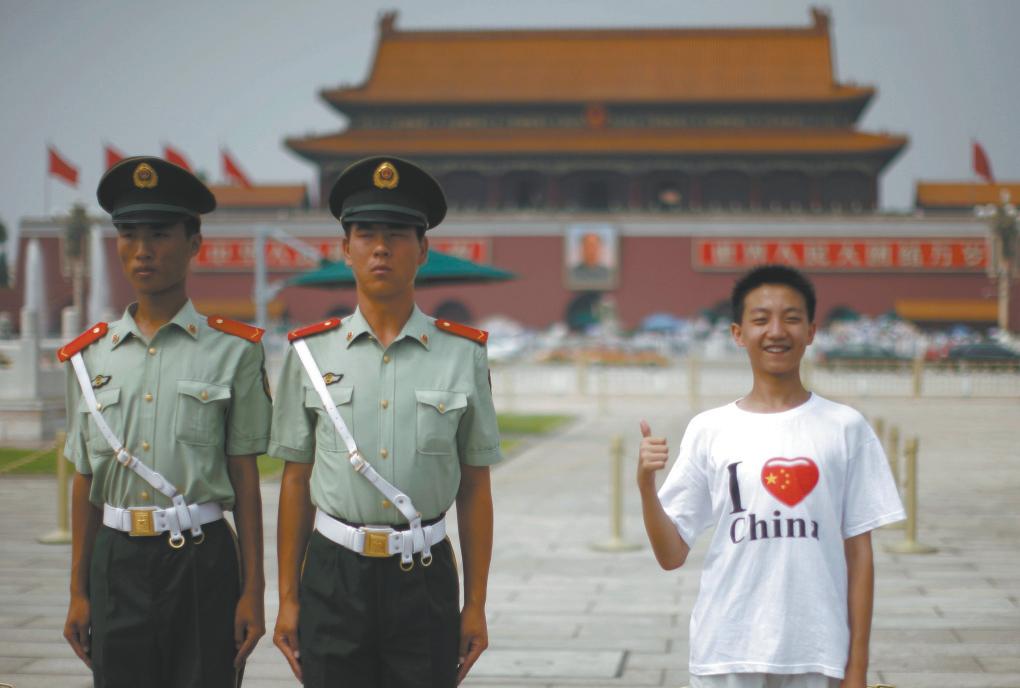
The Government’s 2020 vision has been blind-sided by a think tank’s report on its population policy disaster
To say that China’s one-child family policy has been a disaster is an understatement. A report released earlier this month by the nation’s top think tank – the Communist Government’s Chinese Academy of Social Sciences (CASS)says that the policy has created a huge gender imbalance with significant implications for future social stability.
Indeed, according to the report, 24 million men reaching marriageable age by 2020 will never marry because of the sex imbalance.
Think of it in these terms: what if the entire population of New York City or of Australia was never able to marry. Imagine the social implications in a city or nation that large where no one can marry.
Imagine if that city or country is comprised solely of 24 million men; men with no homes to return to at night; men without the responsibilities of a family to keep them engaged in productive pursuits.
The CASS report – carrying the understated title “Contemporary Chinese Social Structure” - raises some key questions but it is short on answers.
Since the report was published many Chinese bloggers have been commenting on its implications.
Some more daring Chinese netizens have highlighted that many boys entering puberty are oblivious to the fact that they will never be able to marry; they ask which parents wish to tell their sons to prepare for a bleak future alone – unable to find a wife and unable to establish their own families. Interestingly the CASS report termed those condemned to bachelorhood “bare branches” because they would not be able to establish family trees of their own.
How China got to this pitiful state is well documented. A rigid one child per family policy, legal and easily available abortion, and a cultural and economic preference for sons, resulted in sex selective abortions since the early 1980s.
Laws to deter such behaviour have failed resoundingly. For example, obtaining knowledge of an unborn baby’s sex from ultrasounds was made illegal to stop abortions of baby girls by the 1990s.
But throughout China’s rural villages and towns it remains possible to bribe staff in
medical clinics and hospitals to find out the sex of an expected child.
Once the parents decide to abort an unborn baby, Chinese law does not require them to carry an unborn baby girl to term.
More girls than boys are aborted. Many more. So much more that Mao Zedong’s words – to emphasise the equality of the sexes - that “women hold up half the sky” will soon ring hollow.
Of course, China has never really given women true equality.
Whether it was foot-binding – an atrocious practice only finally outlawed by the Communists – or the Communists telling women how many children they may have, Chinese women have long been denied the right to determine their own futures, especially when it has come to their most basic right, the right of reproduction.
The fact that women in China’s National Population and Family Planning Commission promote the policy does not make it any the less repressive of women.
The main concern raised by the CASS report is that 24 million men condemned to a life alone will result in a major strain on the State welfare system.
Essentially, without families of their own to care for them as this generation starts ageing, the State will need to step in with sufficient pension funds and aged care facilities for the old bachelors of the latter decades of the 21st Century.
But other problems – such as a rising incidence of prostitution and violent crime - are on the horizon, judging by some current trends.
For example, while the number of baby girls being born has declined, the number of kidnappings and trafficking of young girls has risen. According to the National Population and Family Planning Commission – that’s right, the very organisation responsible for the one child family policy - abductions and trafficking of women and girls has become “rampant”.
Young girls are being kidnapped within China and also from neighbouring countries (Laos, Cambodia, Vietnam, Myanmar, Thailand) by organised gangs who sell them to families with boys of a similar age. The girls will be raised by the families and given as brides to their sons as soon as they reach marriageable age.
Others are shipped to brothels within China for a life as sex slaves.
Needless to say China’s neighbours are not enamored of the growing practice. Diplomatic tensions have risen over the issue and China has had to establish a special police unit to


CAROLYN MOYNIHAN
Beyond equality, the question of meaning
help its neighbours combat the very crime its policy has created.
Even more bizarre crimes have been reported in this patriarchal society where it is believed that a wife is necessary to tend to her husband even after death. A rising practice in some remote areas of China is to dig up the corpses of single women to sell to families whose sons may have recently perished.
Posthumous wedding ceremonies are held to ensure the deceased son does not have to endure the next life alone. With higher prices commanded by fresh corpses of young women the practice has led to murders of young girls by some crime gangs looking to capitalise on distraught parents enduring the loss of a young son.
It appears the CASS report has merely touched the tip of the iceberg. But it is interesting that the nation’s top Government think-tank is publicly discussing the matter. Could the public airing of the coming social problems caused by the one-child family policy mean that the Government is ready to repeal the policy? Or has CASS just made a Cassandra prophecy?
Indeed, it seems unlikely the Government will pay too much attention to the real implications of the report. More likely the Government will only continue tinkering at the edges of the policy.
For the past couple of years, China has allowed married couples in its larger cities, where both members of the couple are themselves the only children of their parents, to have two children.
In all probability, China is only going to extend this privilege to its smaller cities and maybe to some towns in rural areas. This belief is supported by the fact that the Government continues to argue the overall success of the one child family policy in reducing China’s population by around 400 million.
As long as the Government believes the country is over-populated it will not rescind its policy – no matter what the costs. Short of a change of Government (not very likely in this nation where, as Mao put it, “power comes from the barrel of a gun” rather than the ballot box), the focus on reducing population size in China is here to stay.
But even if China totally repealed the onechild family policy today, it would be too late for today’s generation of teenage boys. By 2020 some 24 million men will start realising that a family life is not for them – no matter how much they yearn for it. China should expect them to be just a little angry.
Constance Kong is the pen name of a Shanghai-based business consultant who writes for Mercatornet.
Can we judge the status of a woman by her paypacket? This month, in which International Women’s Day falls, Mercatornet.com held an online symposium with women thinkers analysed key issues facing women - where women’s liberation has taken us, what has been achieved and what can be done to improve the status of women by 2020. Judging by their comments, it seems many see John Paul II, who coined the term ‘feminine genius’, as being insightful and profound on what women really want. Who knew?
society for most of the former British colonial rule and some time after had a defined role. She was the dependable “wife/mother” who was responsible for all the practical chores in the household, waking before dawn and taking her rest late in the evening way after everyone else.
This year began with The Economist applauding the economic empowerment of women across the rich world as “one of the most remarkable revolutions of the past 50 years.”
A Pew report drew attention to the “rise of wives” in terms of education and their economic contribution to the home. Is the struggle for equality nearly over in the rich world? And when it is, what then? Is there anything else?
Yes, there is. When the last glass ceiling has been shattered we will have to confront the fact that there are still two sexes, and ask what that means.
What does it mean to be a woman?
What are women’s specific characteristics and strengths?
How can they be fostered and brought into play for the benefit of everyone?
People running the gender agenda do not want us to ask these metaphysical questions.
They will tell us it is a bid to tie women and men up in sex-role straightjackets again. Let’s ignore their protests. We have to address once more the meaning of being a woman, or a man, or we will never get out of the blind alley where a woman’s dignity is reduced to her income and whether her husband does half the chores at home.
Carolyn Moynihan is deputy editor of MercatorNet.

ANGELINA K AKOOZA-MWESIGE
Her opinions were hardly expressed; she was economically dependent on her husband, unable to make decisions of her own, and respectful of her husband’s every wish and whim. Her education was not a priority for she was viewed as a means of family enrichment, especially at the time of her marriage when the income obtained by her family from the bride price would be realised.
Over the years this scenario has been changing. Ugandan society now values the education of a woman not only for her nurturing role but as critical to the development of a healthy nation.
This is illustrated by a number of highly educated Ugandan women who have joined the service and political ranks of what was previously thought to be exclusive male territory.
She is now to some extent able to voice her opinions, make informed decisions and be economically independent.
We need to extend this recognition of women’s equal dignity to all African women.
Dr Kakooza-Mwesige Angelina is a paediatrician in the Department of Paediatrics & Child Health, Makerere University College of Health Sciences, Kampala, Uganda.

LEA SINGH
Dressing for respect
Like many women today, throughout my teens and twenties I was a good girl who dressed provocatively without giving it a second thought.
To me, that was simply fashion; it was what I saw in magazines and on TV, it was fun, it made me look pretty, and it gave me a sense of empowerment and freedom.
This is a seriously undervalued cultural misunderstanding. In his book Gut Check Tarek Saab writes of the “uncomfortable, daily martyrdom” that many good men are forced to fight each day in order to keep their thoughts chaste in a society saturated by scantily and seductively dressed girls and women.
Every woman has the power to make her dignity easier for men to recognise and respect, just by the clothes she reaches for in the morning.
I hope that by 2020, more women will be making that choice.
Lea Singh is a wife and mother of a young and growing family in Ottawa, Canada.

JENNIFER ROBACK MORSE Motherhood within marriage is a worthy choice
Ihave a radical idea for promoting the dignity of women: the idea that giving birth to children inside marriage is good and worthy use of one’s time and talent. This idea has come under assault from many directions.
We hear that intelligent women should use their minds, by giving priority to career. Taking care of children is for losers with nothing better to do. We hear that independent women should not rely on men financially. It is better to have a child alone, or to be childless, than to be financially interdependent with the child’s father.
We hear there is no urgency to having children.
If you haven’t found a husband, if you haven’t made the time to become a mother naturally, you can always use artificial insemination with donor sperm, to become a mother at the time of your own choosing.
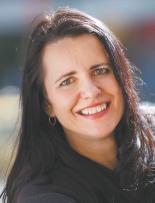
MELINDA TANKARD REIST Demand an end to sexual objectification
My hope is that that young women might declare that they will no longer be the targets of sexualisation and objectification. I hope that they will boycott companies, advertisers and marketers who trade in their bodies to sell products and services.
I hope they will demand an end to the proliferation and globalisation of sexual imagery which contributes to them being seen as valid participants in a public culture of sex where they learn to present hypersexualised prostitute-like versions of themselves to the world.
I hope that girls will demand to be treated better, resisting predatory sexual attitudes and say no to the pressure to adopt pornified role and behaviours.
That they will say no to being reduced to service stations for boys.
I hope they will throw off the shackles of self-hatred caused by a society which makes them feel bad about themselves with its emphasis on being thin, hot and sexy.
I hope they will join the new global grassroots uprising against this dehumanising treatment and make a mark in the world that goes beyond the air-headed cult of celebrity, fashion and a sexualised persona.
I hope they seize life with both hands and be all that they can be.
Melinda Tankard Reist is an author, speaker, commentator and advocate for women and girls. She is editor of Getting Real: Challenging the Sexualisation of Girls (Spinifex Press, September 2009) and is also spokesperson for Collective Shout: for a world free of sexploitation
How is our culture treating women? Some like to go on about “equality” and “the wage gap”, but are we forgetting one of the simplest, and yet most effective ways to improve the everyday lives of women?
Good manners.
Really? Manners? Isn’t that a little, I don’t know, simplistic? Trivial?
Juvenile? Old-fashioned?
Maybe. But let’s think about it.
Women are suffering because they decided that chivalry was oppressive and degrading, that they could be, wanted to be, “one of the guys”. They made it clear that they want to pay their own way, carve their own path.
And men took them at their word.
So we have dirty language in public, pornography at the supermarket, a growing coarseness in entertainment and public discourse ... and nobody holds doors open anymore.
Manners were put in place to protect women, to help them, to make them feel comfortable, to provide a road map for relationships, and to encourage men to treat women properly. Remind me what was wrong with that again?
Rebekah Hebbert is a homeschool graduate, 20 years old, blogger at missmarprelate.blogspot.com, and does event blogs for conservative events. She lives in Ontario, Canada.

FRANCIS PHILLIPS
Women should reclaim their feminine genius
“Why can’t a woman be more like a man?” asked Professor Henry Higgins in the musical My Fair Lady.
in her groundbreaking study, The Sexual Paradox has led her to recognise that the goals and aspirations of women are different from men. She uses the word ‘biological’ where I use ‘intrinsic’ but our conclusions are similar. Young women will be more at peace with themselves – and therefore increase the peace of the world – when they acknowledge their “feminine genius”. Francis Phillips graduated from Cambridge University, where she read English, now works as a freelance journalist and is married with eight children.

CATERINA F LORENZO-MOLO
Hold onto the best in your cultural heritage
Someone once told me that if you want to destroy a society, destroy its women. Philippine culture has traditionally given women a unique place. Mothers are viewed as the light of the family since they are the nurturers both of children and the man of the house. Our national hero Jose Rizal wrote that his mother was his first mentor, providing great wisdom and insight into everyday life.
Education the
One way in which the status of women in Uganda and in Africa as a whole can be improved by 2020 is to ensure that their education is given paramount importance.
A traditional woman in Ugandan
I thought that my dignity was actually boosted by this fashion; such is the legacy of feminism.
The shocking secret is that the perspective of many men is quite the opposite. Because such clothing invites them to see the woman as an object, I was actually reducing my human worth and dignity in their eyes.
If we accept these ideas, we lose essential features of being a female human: an appreciation of woman’s natural life-giving powers, of woman’s desire for lasting relationships, and of woman’s intrinsic delight in bringing forth new life. Male and female are two different ways of being human. Without women being women, men too, are diminished.
The uniquely feminine becomes obscured to us all, much to the loss of woman’s intrinsic dignity.
Jennifer Roback Morse, PhD is the Founder and President of the Ruth Institute, a project of the National Organisation for Marriage.

REBEKAH HEBBERT
We need a new age of chivalry
“That is true culture which helps us to work for the social betterment of all.” ~
Henry Ward BeecherToo many women have been told that this is a legitimate aspiration rather than humorous rhetoric. We have been subjected for decades to the militant feminist propaganda that there is no difference between the sexes. I would like young women of 2020 to proudly reclaim their own identity; not to identify with men or compete against them– the “anything you can do, I can do, better than you” syndrome – but to explore their own intrinsic gifts of empathy, compassion and nurturing, as they are played out at home or in the work place.
This thesis has received support from an unlikely person: Canadian psychologist Susan Pinker. By her own admission a convert from militant feminism, her research into women and careers
But this has changed. Woman’s wisdom has turned into fits of “girl power” and fashion fever. Shyness, once a desirable trait, is now often referred to as a social anxiety disorder; “release that diva in you” is the new call to womanhood - not only in the Philippines but in much of the traditional “woman should be seen, not heard” East. It is a fact that women have often been abused and not accorded the respect they deserve; but current feminism does no better, denying women their femininity. As the saying goes, behind every good man is a good woman; and behind her, another good woman - because she too was probably nurtured by this warm and mysterious guide. To accept and embrace this is true feminism.
By 2020, we should wish for women, particularly in developing nations, to not lose sight of their cultural heritage, but to trust the more traditional view of woman as a light for the mind and heart. This is part of her mysterious attraction.
Caterina F Lorenzo-Molo is a Professor at the University of Asia and the Pacific in Manila, wife of a lawyer and mother of three young girls who all want to: 1) write fiction, play the piano and the violin, and dance as lifetime hobbies; and 2) pursue careers in medicine, science, and fashion.
Editor
MORE than 100 people converged on Good Shepherd Parish in Kelmscott last Saturday to spend a day in the company of the Blessed Virgin Mary.
What might seem to non-Catholics as a quaint devotional practice is really a robust series of spiritual exercises that offer anyone the chance to focus more deeply and intensely on issues such as the meaning of their life and their relationship with God, especially through the unique role of the one person who knows God best – Mary.
Called ‘A Day with Mary,’ the event offers a spiritually uplifting opportunity to deepen one’s sense of the presence of God, especially in a Marian context.
Among the prominent features of the day, run by the Franciscan Friars and Sisters of the Immaculate, is a family video which always focuses on the astonishing events including the apparitions and messages of Mary to three children at Fatima in Portugal in 1917.
A beautifully decorated statue of Our Lady of Fatima which resided in the Church throughout the day was carried in procession around the parish church grounds accom-
AN EX-STUDENT of Mercy College in Koondoola who became a convert in his final year at the school now heads the Australian arm of one of the newest religious orders in the world.
Fr Sharbel Hayward FI (pictured) must also be one of the youngest heads of a religious order in Australia.
The 38-yearold is a past student of Mercy College who, after a decade or so overseas in formation and preparation for the priesthood, returned Australia where he now heads the Perth-based Australian mission of the Friars.
panied by intense prayer on the part of those present.
Among many events, children participated in honouring Mary by crowning her statue, those present dedicated their day of prayer and reflection to her, Mass was concelebrated by the priests of the Friars and a Eucharistic procession was also conducted.
Two talks were delivered by the Friars on Our Lady and the Eucharist, while time was made available for Eucharistic adoration.
Three Rosaries were prayed throughout the day as well as the Divine Mercy chaplet, which helps turn the mind to the mercy and love of God; meditations on the Passion of Christ were given as well.
Benediction and the Sacrament of Reconciliation were among highlights of the day. Fr Sharbel, the Perth-raised head of the Friars (see separate story) and also superior of the Order’s mission in Australia, told The Record the Day with Mary which is conducted monthly in parishes around Perth, is also a prominent part of the Order’s work around the world; in London it is held once a week.
“It’s a great opportunity for a parish to come together with visitors from the surrounding area – we hope it gives people a bit of a spiritual boost,” he said.
– he shook hands with the individual who is expected to be beatified in the near future - was one of several events that had a profound influence in his life.
Although a student at a Catholic college he wasn’t baptised until the end of high school.

He is also a convert. The experience of personally meeting Pope John Paul II in 1986 when the late Pope visited Perth
The discovery of the presence of God in his life led him to begin the process of discerning his vocation, leading him eventually to the Franciscan Friars of the Immaculate, a new branch of the Franciscan family within the Church which was formed in 1973. The spirituality of the order, which has both men’s and women’s branches, is strongly Marian and it is named after Mary’s title honouring her as the Immaculate Conception, reflecting the Church’s belief that Mary was unstained by Original Sin from the very moment her life began.



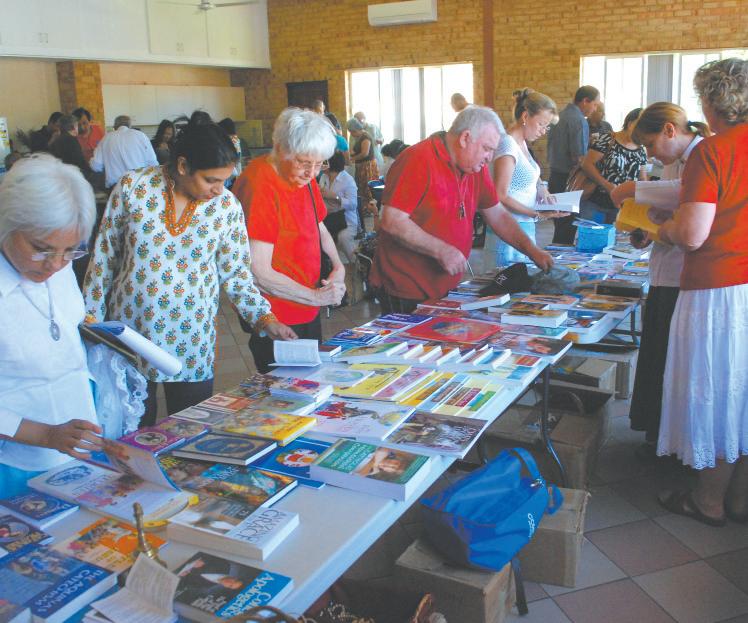
Continued from Page 1
“There was also the trust in God. When I saw the fires the thought came into my mind that God gives and He takes away, but in the end all things work to God’s will - even in disasters and tragedy, God brings good, even out of this.”
Fr Joseph, who was ordained in New York in 1996, said it was a new experience for him, having had two stints in WA – one from 1998-2000 and the other from December 2008 to the present.
“It was a new experience for me. I’ve never experienced a bushfire,
to see it so close and to see how fast it moved,” he said.
The friars did a procession 3 March around the property asking St Joseph to pray for rain.
“The sad thing is that they’re sure it was arson, they’ve already detected three points where the fire was started,” Fr Joseph said. “That’s sad, to know that people would put other people or their property in danger. That means we just need to pray for them too.”
Fr Joseph says he has a renewed respect for the “dedicated and heroic” firemen who saved six
homes in the area, as those who attended the blaze were volunteers and worked non-stop to contain the fire from 3pm until 9am the next day. Two firefighters were hospitalised with heat exhaustion.
Fr Joseph said that now the surrounding bush has been reduced to ash, fires are not expected to encroach for up to two years.
The friars spent three hours at the police roadblocks before being contacted by their good friend, Aquinas College Religious Education Coordinator Paul Kelly, who lives nearby in Success, and
stayed at his house until they were allowed back into their friary at 10pm. On 29 December, 2009, a bushfire near Toodyay friary destroyed up to 40 homes, yet the friary was also untouched and there was no loss of life.
In the spirit of St Maximilian Kolbe, the friars posted a report and footage of the 1 March fires on their website, www.airmaria.com.
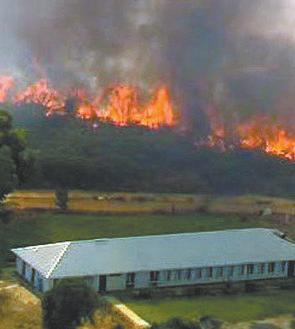
This vinyl die-cut decal is 10x13cm big and is a clean bright white colour. Easy to apply, this sticker can be placed on any car, truck or suv, on any window or smooth surface. Show your faith with this great Catholic decal in the shape of the Miraculous Medal.
Price: $9.95 +p/h
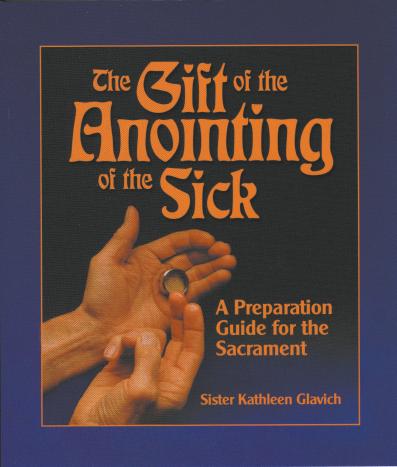 By Sister Kathleen Glavich
By Sister Kathleen Glavich
The Anointing of the Sick is perhaps the most misunderstood sacrament of the Catholic faith.
In The Gift of the Anointing of the Sick, Sr Kathleen Glavich clears up the misunderstandings about this Sacrament and presents it as it actually is: a way that the Church supports and intercedes for those who are sick. In clear and easy to understand language, Glavich explains in detail the beauty and power behind the ritual. While this book is meant to prepare those receiving the Anointing of the Sick, it will also help their loved ones understand and prepare for what happens during the celebration of the Sacrament.
The Gift of the Anointing of the Sick describes: A history of the sacrament; The meanings of its symbols; Different ways it is celebrated; How to prepare for it; Reasons to receive the sacrament; Effects of the sacrament; A questionand-answer section; Suggested Scripture readings and prayers.

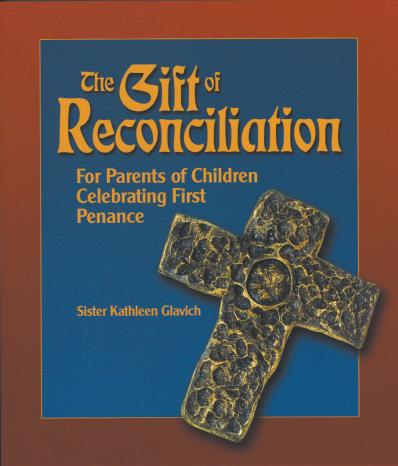 By Sister Kathleen Glavich
By Sister Kathleen Glavich
The Gift of Holy Communion enables parents to help their children understand, celebrate and remember the spiritual significance of their First Communion.
Price: $13.95 + p/h
Parents will welcome this clear, concise explanation of basic Catholic teachings about the Sacrament of Reconciliation. It describes the guidelines and procedures for a child’s first confession, and provides practical suggestions to help parents make the child’s initial reception of the Sacrament a holy, treasured and memorable event. It contains answers to frequently asked questions along with prayers and Scripture readings that pertain to forgiveness and reconciliation. Parents can use this book as either a primary or supplemental resource for learning about the Sacrament and teaching their child about confession.
RRP $13.95 +p/h



For those chosen with love and trust to be Godparents. This upbeat, down-to-earth explanation of the sacrament of Baptism and the responsibilities of godparenting blends touching stories of real-life godparents with suggestions about how to help a godchild grow in the faith from baptism to adulthood.
RRP $13.95 +p/h
The Eucharistic Apostles of the Divine Mercy
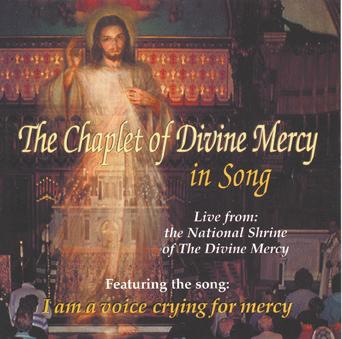
RRP $19.95 +p/h
THE head of an Irish agency concerned with child abuse has said that he is confident that sexual abuse by Catholic priests is “coming to an end,” as the Irish bishops adopt programme to protect children. Ian Elliott of the National Board for Safeguarding Children reported that “a uniform commitment to change has taken root across dioceses.” As evidence of the Bishops’ new attitude, he cited a passage from the statement issues after a meeting in Rome, in which the Irish bishops affirmed “their collective commitment to the National Board for the Safeguarding of Children”- the agency he leads. Several bishops have already taken courses offered by the National Board, he said.
MUSLIM gangs attacked three villages in central Nigeria and killed up to 400 Christians in pre-dawn attacks on 7 March.
“The shooting was just meant to bring people from their houses, and then when people came out they started cutting them with machetes,” said one witness. Another added: “We saw mainly those who are helpless, like small children and then the older men, who cannot run, these were the ones that were slaughtered.”
Some 300 Christian churches have been destroyed in the area around Jos during the past four years. In an interview with Aid to the Church in Need, Archbishop Ignatius Kaigama of Jos described his efforts to have friendly relations with Muslims, the effects of the local imposition of Sharia, and the caution with which he catechises potential Muslim converts, some of whom “come just because they want to infiltrate.” The nation of 142.5 million is 15% Catholic.
THE Diocese of London, Ontario, has announced plans for a “confessional blitz” on 3 March, encouraging the faithful to return to the Sacrament of Reconciliation. All priests of the diocese have been asked to schedule time for confessions on that date; more than 120 different parishes will make the sacrament available. The diocese has distributed 100,000 flyers explaining the program and providing instructions on making a good confession. The programme was inspired by the success of a Lenten drive to encourage confessions last year in the Archdiocese of Washington, DC. The Boston archdiocese has undertaken a similar programme this year.
THE iconic image of sweet little English school girls in their uniforms could become a thing of the past if the government follows the advice of its new “human rights commission.” Requiring skirts in school uniforms discriminates against school girls who want to be boys, the Equality and Human Rights Commission (EHRC), said in a report last week. “Gender-specific” clothes, the EHRC said in its 68-page report on the rights of “transsexuals” this week, could be discriminatory. “Pupils born female with gender dysphoria experienced great discomfort being forced to wear stereotypical girls’ clothes – for example a skirt,” the report said. The EHRC is a nondepartmental government body established by the Equality Act 2006 that began to function in October 2007. The EHRC called its latest published “guidance,” the Provision of Goods, Facilities and Services for Trans People, a “how to guide” for “managers and front line staff of all levels” that gives “good practice examples.”
LESS than two weeks after the Philippine government distributed condoms for Valentine’s Day, some Philippine bishops are calling for the resignation of the nation’s health secretary, Esperanza Cabral.
“It is immoral for a government official to support the distribution of condoms which we know do not really reduce or stop the spread of HIV-AIDS,” said Archbishop Ramon Arguelles of Lipa. “It’s worrying because it is the morality in society, especially among the youth, that is at stake.” “Secretary Cabral should not continue serving until June because the culture and morality of society will be endangered under her,” added Bishop Dinualdo Gutierrez of Marbel.
“Is she Catholic? I doubt that she is. Because if you are a Catholic and in the government, you should be living the teachings of the Church. But she is doing the opposite.”
The Health Secretary has accepted an invitation by two Bishops to take part in a public debate on condom effectiveness, saying: “I accept their challenge. But if it is a question of faith, I will not debate religious beliefs with them because we should all respect each other’s faith. If it is a question of the function of the Church in relation to the State, there is nothing to debate because our Constitution says the Church is separate from the State.”
VATICAN CITY - The Vatican fully supports the efforts of German Bishops to investigate claims of child sexual abuse in Catholic institutions, even if the cases are decades old, L’Osservatore Romano reported.
“Full disclosure regarding abuse in Germany,” said the front-page headline of the 7 March edition of the official Vatican newspaper.
“The Church is working rigorously to shed light on what happened in religious institutions,” it said.
The article followed a letter posted on 5 March on the website of the Diocese of Regensburg, acknowledging past cases of sexual abuse of young students attending the Domspatzen, the school that trains the elite boys’ choir of the Regensburg Cathedral.
Initial news reports said the abuse may have occurred while Mgr Georg Ratzinger, brother of Pope Benedict XVI, was serving as choirmaster at the school. But the Regensburg Diocese said the cases occurred in the late 1950s, while Mgr Ratzinger held the post from 1964 to 1994.
Mgr Ratzinger told the Italian daily La Repubblica that no cases of priestly pedophilia had come to his attention during his tenure there, but that he would be willing to testify should he be summoned by German judicial authorities.
In an online letter addressed to students and parents, Regensburg Bishop Gerhard Ludwig Muller spoke of two former priests at the school who had been involved in incidents of pedophilia in the 1950s and subsequently jailed.
The letter asked anyone with information regarding similar episodes to come forward and said it was seeking specifically a former student who had told German news media that he had been abused at the school.
In a 5 March news conference, Bishop Muller said any claims of sexual abuse would be treated with “the maximum transparence.”
The Vatican, wrote L’Osservatore Romano, “supports the diocese in its willingness to analyse this painful issue with decisiveness and openness, according to the rules established by the German bishops’ conference.”
The Church’s main objective, the paper wrote, “is to render justice to the victims.” It said authorities from other institutions, including public schools, should adopt a similar attitude. As has happened in the United States, Ireland, Australia and other countries, dozens of Germans have made claims recently that they suffered sexual abuse as children while attending Catholic schools. And as in those situations, the Church leadership has been accused of protecting priests rather than children.
Cardinal Walter Kasper, a senior German prelate and the Vatican’s chief ecumenical official, said in an interview in La Repubblica that priestly sexual abuse must be punished and the Church must take responsibility.
“Enough! We need serious housecleaning in our Church,” he

said, adding that “the Pope is certainly not standing idly by.” He called the sexual abuse of minors on the part of clergy “a criminal, shameful act and an inexcusable mortal sin.”
Cardinal Kasper said “the Holy Father is right in seeking clarity and demanding zero tolerance toward whoever is stained by such grave sins.”
The leadership of the German bishops’ conference will be meeting with Pope Benedict on 12 March at the Vatican. The visit was scheduled previously, but the rapidly developing sex abuse scandal was sure to be discussed.
The Pope met in February with Irish bishops to discuss the problem of widespread sexual abuse of minors in Catholic schools after a scathing independent report accused the Church in Ireland of maintaining a culture of secrecy for many years.
The Pope was to write a pastoral
letter to Irish Catholics regarding what he called the “heinous crime” of priestly sexual abuse.
Cardinal Kasper said that while the question of the pastoral letter was up to the Pope, he felt that because “such a difficult problem has emerged not only in Ireland, but in Holland, Germany and the United States, perhaps it deserves a more general analysis that applies to the universal Church and not just a single nation.”
Claims have been made that some students had suffered physical and psychological abuse as well in German Catholic schools.
Mgr Ratzinger said that while he served at the school, “there was a climate of discipline and rigor ... but also of human understanding, almost like a family.”
He said that he believed that there was “a certain animosity towards the Church, and I see behind certain claims the intention to speak against the Church.”
WARSAW, Poland (CNS)
- Austria’s Catholic Bishops announced new measures to counter clerical sexual abuse after a spate of allegations against local priests.
“Church bodies have a responsibility to act clearly and consistently towards all suspected cases and accusations,” the Austrian Bishops’ conference said in a 5 March statement.
“Care must be directed above all towards the victims and appropriate consequences drawn for the perpetrators. We therefore believe improvements are necessary to the measures we have taken previously,” they said.
The document, issued after their 1-4 March meeting at Sankt Poulten, said all dioceses had taken steps during the last 15 years to prevent abuse by clergy by opening special offices, or Ombudsstellen, to handle abuse claims and establishing training programmes for clergy and lay Church workers.
However, the statement added, cases of abuse “in both Church and society” also had been ignored, and said detailed guidelines adopted by the Vienna Archdiocese would form the basis for new instructions for the Church nationwide.
“With shame and hurt, we acknowledge that the conviction has emerged in recent years in Austria that nothing counts more than the truth in accusations of sex abuse,” said the Bishops, who oversee a Church that claims the membership of 78 per cent of Austria’s population of 8.1 million. “We then invite everyone who has suffered to turn to their diocesan ombudsman’s office for a protected and confidential talk, and we ask the culprits to give an honest account.”
The statement came after two late-February announcements involving incidents of alleged abuse.
Prosecutors in Salzburg said they are investigating abuse claims against a religious order priest while officials of the GrazSeckau Diocese confirmed on 24 February that an abuse victim attempted to blackmail clergy for 1 million Euros.
In their statement, published on the Bishops’ conference website at www.bischofskonferenz.at, the prelates said they appointed a group of experts to prepare a “detailed total concept” for improving the Church’s handling of abuse charges in time for their June meeting.
WASHINGTON - Although John F Kennedy’s famous speech in Houston nearly 50 years ago could be seen as “a passionate appeal for tolerance,” the candidate’s remarks about how his Catholicism would affect his presidency “profoundly undermined the place ... of all religious believers in America’s public life,” outspoken Archbishop Charles J Chaput of Denver said.
“His speech left a lasting mark on American politics. It was sincere, compelling, articulate - and wrong,” the Archbishop said in a 1 March talk at Houston Baptist University on “The Vocation of Christians in American Public Life.”
Speaking to the Greater Houston Ministerial Alliance on 12 September, 1960, less than two months before his election as the first Catholic US President, Kennedy said that if his duties as president should “ever require me to violate my conscience or violate the national interest, I would resign the office.”
He also said he would not “disavow my views or my Church in order to win this election.”
“But in its effect, the Houston speech did exactly that,” Archbishop Chaput said. “It began the project of walling religion away from the process of governance in a new and aggressive way. It also divided a person’s private beliefs from his or her public duties.”
He said Kennedy’s talk led to a situation today when there are “more Catholics in national public office than ever before” but at the same time fewer who could “coherently explain how their faith informs their work, or who even feel obligated to try.”
“Too many Catholics confuse their personal opinions with a

real Christian conscience,” the Archbishop said.
“Too many live their lives as if it were a private idiosyncrasy - the kind that they’ll never allow to become a public nuisance. And too many just don’t really believe. Maybe it’s different in Protestant circles. But I hope you’ll forgive me if I say, ‘I doubt it’.”
Moving to the question of what “a proper Christian approach to politics” would be, he outlined the skills needed by “the Christian citizen”: “a zeal for Jesus Christ and His church; a conscience formed in humility and rooted in Scripture and the believing community; the prudence to see which issues in public life are vital and foundational to human dignity, and which ones are not; and the courage to work for what’s right.”
Among the “urgent issues that demand our attention as believers” he listed “abortion; immigration; our obligations to the poor, the elderly and the disabled; questions of war and peace; our national confusion about sexual identity and human nature, and the attacks on marriage and family life that flow from that confusion; the growing
disconnection of our science and technology from real moral reflection; the erosion of freedom of conscience in our national health care debates; (and) the content and quality of the schools that form our children.”
He called abortion “the foundational human rights issue of our lifetime”, adding: “We need to do everything we can to support women in their pregnancies and to end the legal killing of unborn children.”
He called on all Christians to unite in “renewing the nation that has served human freedom so well.”
“The vocation of Christians in American public life does not have a Baptist or Catholic or Greek Orthodox or any other brand-specific label,” he said.
In a second speech during his Houston visit, Archbishop Chaput urged Catholic health care professionals gathered at the University of St Thomas to rededicate themselves “to being truly Christian and deeply Catholic” in their work.
“We need to ask ourselves how ‘Catholic’ we really want to be,” he said in the 2 March address.
“If the answer is ‘pretty much’ or ‘sort of’ or ‘on my own terms’ - then we need to stop fooling ourselves.”
“If you’re a doctor or ethicist or hospital administrator or system executive working in Catholic health care, and in good conscience you cannot support Catholic teaching or cannot apply it with an honest will, then you need to follow your conscience,” the Archbishop said.
“It may be time to ask whether a different place to live your vocation, outside Catholic health care, is also a more honest place for your personal convictions.
“What really can’t work is staying within Catholic health care and not respecting its religious and moral principles with all your skill, and all your heart.”
He said the Ethical and Religious Directives for Catholic Health Care Services offer “practical, real-world guidance for your daily work.”
Archbishop Chaput criticised what he called “a national pattern” of efforts by various State and local governments “to press Catholic hospitals, clinics and other social service institutions into violating their religious principles.”
“In a nation built largely by people of faith, with a long history of religious liberty, this is a battle Catholics should never have been forced to fight,” he said.
“What kind of society would need to coerce religious believers into doing things that undermine their religious convictions - especially when those same believers provide vital services to the public?” He also said the current proposals for health care reform “with any hope of advancing now in Washington all remain fatally flawed on the abortion issue, conscience protections and the inclusion of immigrants.”
“But the even harsher reality is this: Whether we get good health care reform or not, legislative and judicial attacks on Catholic health care will not go away, and could easily get worse,” he said.
‘Short-sighted’ government distorts what religion does in society: English, Welsh BishopsBY SIMON CALDWELL Catholic News Service
LONDON - The Bishops of England and Wales have criticiSed the British government’s growth policies, saying that it was undermining the ability of people to live upstanding lives.
In a 10-page document published on 3 March called, “Choosing the Common Good,” the Bishops said local communities would prosper if the public recovered the cardinal virtues of prudence, temperance, justice and fortitude.
They also criticised legislation that limited the rights of Christians to contribute to the common good.
“Have we allowed ourselves to be seduced by the myth that social problems are for the government to deal with?” the Bishops asked in the document, which was published to offer advice to voters ahead of the 2010 general election,
which must be held by June. “No government can solve every problem, nor make us more generous or responsive to need,” the document said. “The growth of regulations, targets and league tables, which are tools designed to make public services accountable, are no substitute for actions done as a free gift because the needs of a neighbor have to be met.”
At a 3 March press conference launching the document, Archbishop Peter Smith of Cardiff, Wales, said the government appeared “obsessed” with targets and new laws. Such a trend, he said, had led to a “tick-box mentality” and a “tendency in recent years to think that the government has to do everything.”
“That means that people think, ‘I don’t have to bother,’” he said.
The left-leaning Labor government, elected in 1997, has passed about 370 pieces of legislation and created 3,500 new crimes in just 13 years.
However, its diversity and equality agenda has drawn criticism from Catholic leaders - including Pope Benedict XVI - who contend it has encroached on the rights of Christians to act in accordance with their beliefs. An example often cited is the decision that
forced the Church to either close or relinquish control of adoption agencies which could not accept same-sex couples as adopters or foster parents. The House of Lords has also just voted to allow Churches to perform marriage ceremonies for same-sex couples. The proposal, introduced as an amendment to the Equality Bill, would not require religious institutions to perform weddings for homosexual couples, but would eliminate one of the last remaining distinctions between domestic partnership and marriage.
The amendment was approved by an overwhelming vote of 95-21. Although the measure was not formally endorsed by the government, observers expect that the House of Commons will not seek major changes in the Equality Bill.
In comments directed to lawmakers, the Bishops’ document said: “Care must be taken not to put obstacles in the way of religious belief and practice which reduce it to devotional acts.
“The right to religious faith means the right to live by faith, within the reasonableness of the common good, and act by faith in the public forum. Partnerships between government and faith communities should be mutually
VATICAN CITY (CNS)
- AS Catholics remember the death of Jesus on Good Friday, they also are asked to remember the Christians who still live in the land where Jesus lived and rose from the dead.
In a letter to the world’s bishops, urging them to support the annual collection for the Holy Land, Cardinal Leonardo Sandri said all Catholics share the responsibility of the Christians in the Holy Land to keep the Church alive there and preserve the sites associated with Jesus’ life, death and resurrection.
Cardinal Sandri, Prefect of the Congregation for Eastern Churches, coordinates the Holy Land collection, which most parishes take up on Good Friday. His office also coordinates the committee that distributes the funds.
Fr Leon Lemmens, an official at the congregation, said that in the past few years, the collection has averaged about $25 million a year.
Along with Cardinal Sandri’s appeal, the Vatican published a report on 8 March on the projects funded in 2008-2009 in Israel, the West Bank and Jordan.
VATICAN CITY (CNS)
- THE Lenten call to conversion is not an attempt to make people feel bad about themselves, but to promote their true good, which is eternal life, Pope Benedict XVI said.
respectful and permit these communities to act with integrity in the provision of public services for the common good.”
The document said faith communities also have a role in forming public policy and “to make a proper contribution to the life of our democracy.”
Archbishop Vincent Nichols of Westminster, president of the Bishops’ Conference of England and Wales, told reporters at the press conference that the Bishops wanted to address the “short-sightedness” among some members of the government who were “distorting what religious faith actually does.”
“Tolerance is Christian virtue and then this is turned on its head because we are being accused of intolerance,” he said.
The message Christians hear is that society “will tolerate everybody except you.”
The document is divided into sections on the cultivation of human virtues, the common good, and the restoration of trust in authorities. It offers advice on the issues of abortion and euthanasia, poverty and the care of the elderly, immigration and community relations, the global community, ecology and marriage and family life.
Celebrating Mass on 7 March at the Rome parish of St John of the Cross, the Pope focused on the day’s Gospel story in which Jesus tells his followers they must convert or they will perish.
He said Lent is “an invitation to the conversion of our lives and to doing appropriate acts of penitence.”
The crowd Jesus was addressing in the day’s Gospel story thought that people who met a sudden and violent death were sinners, while the fact that members of Jesus’ audience were still alive meant they had nothing to worry about,” Pope Benedict said.
But Jesus warned them that by not recognising their own sins and not setting out on the path to conversion, they would not be saved, he said.
“During Lent, each one of us is called by God to make a change, thinking and living according to the Gospel, correcting things in our way of praying, acting, working and relating to others,” he said.
“Jesus makes this appeal to us not with an aim of severity, but because he is concerned for our welfare, our happiness and our salvation,” the Pope said.
 Diane Raftos
Diane Raftos
Iwas brought up Anglican and was a regular ‘churchgoer’ in my teens and 20s. Then I married and my first husband didn’t attend services so I stopped going as well. We drifted apart in later years and in the end I went through the process of annulment. It was amicable but one of my regrets is my son from that marriage was not brought up to go to church either. Then I met my husband Errol who kept saying, “We should get back to church.” I would say, “Yes” but it really wasn’t until the Baptism of my granddaughters that we made the commitment.
 with Debbie Warrier
with Debbie Warrier
About two years ago both my granddaughters were baptised at Our Lady of the Mission Church, Whitfords. My husband Errol became a Catholic 21 years ago but he had been away from the Church for a while. I also had not been to a church for several years. The day of the Baptism we went to Mass and it was like coming home. It was beautiful.
We started going to Mass every week. I hadn’t thought about converting until out of the blue Errol said, “How would you feel about becoming Catholic?” I said, “Yes, I’d love to.” We got the information, went through the journey with the RCIA and I became a Catholic at Easter. We enjoyed the weekly meetings so much we didn’t want to stop going! The coordinators asked us if we would stay on as a support team which we did. Now we are sponsors for any of those attending the RCIA that need one. Recently we attended the RCIA State Conference in Geraldton.
Just after I became Catholic, Fr Joseph Tran approached me and asked if I would like to become a special minister. I felt so honoured yet unworthy and humbled. Now it gives me great joy. Errol and I are greeters at 8am Mass, welcoming members of the congregation and visitors to the Church at the beginning of Mass. We love it. It’s great.
People at our parish call us “God’s garbos” because we put the bins out on Tuesdays! From time to time we assist a friend of ours who cleans the Presbytery. These are just little things that we enjoy doing. It means we can be part of the parish community.
As part of our commitment to the Legion of Mary we do home visits. It’s lovely to meet people. Usually they are elderly as most of the young people work. Some are lonely and it is nice to have a cuppa and a chat. It breaks up the day for them. We usually visit people in their homes although we sometimes visit nursing homes. We especially like to visit people who have lost their partner or have no family. Everybody we visit is like family to us. Now we wouldn’t miss it for the world. It is just part of our life.
I left England and Anglicanism behind in 1977. I have been in Perth ever since. I found the Anglican Church quite cold and never felt that I was part of the family. I appreciate the frequency of the Masses in the Catholic faith which is another difference. I am glad that I have become Catholic. Now I really feel that I belong.
If you have a story to tell please contact Debbie via dwarrier75@gmail.com

Many a parent could echo the heart-rending cry we hear from God Himself every year on Good Friday: “My people, what have I done to you? How have I offended you? Answer me!”
There is good reason why forgiveness is so strongly emphasised in the New Testament. Forgive us our trespasses as we forgive others; not just forgiving seven times, but seventy times seven; the powerful parable of the prodigal son, for example.
Forgiveness and love; two of the most misunderstood things on the planet today, I think.
We teach our children to esteem themselves highly, but sometimes are we inadvertently teaching them an overweening pride in themselves? Parents walk a fine line in this, as in everything.
It requires humility, both to ask forgiveness and to grant it. We have to accept that we are far less than perfect ourselves, so cannot reasonably expect perfection in others. But still as parents we must teach our children to aim high and avoid complacency. To teach this lesson while still keeping your children’s spirit intact is a tough one.
But the ability to forgive others and to humbly accept that there is much we need to be forgiven for ourselves is central to authentic love.
St Paul gets to the nub of the matter when he says love covers a multitude of sins; and elsewhere without love we are empty vessels making much noise. We are all called to the vocation in which we are most likely, and most challenged, to learn what real love is. That is why it

sometimes seems as though we end up in a vocation for which we may feel a little ill-suited. For example, marriage tends to quickly and humiliatingly show up all the weaknesses and selfishness in our own nature – but not as quickly as it shows us the weaknesses in our spouse’s nature!
The humility, courage and generosity – the love, in fact – that is required to accept and forgive what we can’t change, change what we can, and learn to tell the difference (to borrow from St Augustine) – is what marriage is all about. You take up the challenge and renew that commitment of courageous, humble love every day, or you run away screaming. This is what family life is for. What we learn about love and forgiveness as spouses it is our duty as parents to attempt to pass on to our children by
example and by correction when necessary.
In the same way we have to learn to listen to our spouses when they might tell us something we don’t like about ourselves; we hope our children will learn to listen to us when we must undertake that task. It isn’t a pleasant task - parents hate it - but it is one we have to take up.
Listening to the Mass readings for the first Sunday of Lent, reminding us that we don’t know when the end is coming so we must hold ourselves constantly ready, is a salutary reminder to all us parents. We have to keep on struggling to make ourselves better, to keep on working, loving and praying for our families, and not shirk our duty, that our children, with our help, may continue to develop into the fine young men and women they are on the way to becoming.
We are not hopelessly bound by desires
Being Heard
 By John Heard
By John Heard
About a month ago, I wrote a column that began to explore the difference between sexual “repression” and sexual “redemption.” It was in response to a former Catholic priest who had announced on the Oprah Winfrey Show that “repression” of desire is the only choice for a person who remains celibate.
Because the question ‘What is the human person capable of in light of our fallen nature?’ is so important, I wanted to expound on the issue of sexual redemption a bit more, especially in light of the insights of Pope John Paul II and his Theology of the Body.
It is abundantly clear from both Catholic teaching and human experience that, so long as we are on earth, we will always have to battle with concupiscence – that disordering of our passions caused by original sin (see Catechism of the Catholic Church 405, 978, 1264, 1426)
The interior battle we experience with our disordered desires is indeed fierce. Yet, as Pope John Paul II insisted, we “cannot stop at casting the ‘heart’ into a state of continual and irreversible suspicion due to the manifestations of the concupiscence of the flesh ... Redemption is a truth, a reality, in the
name of which man must feel himself called, and ‘called with effectiveness’” (TOB 46:4).
This “effectiveness” means that we are not hopelessly bound by our fallen desires. The Catechism observes that the idea that concupiscence is insurmountable actually stems from the Reformation (see CCC 406). As Catholicism teaches, through the gift of redemption “the Spirit of the Lord gives new form to our desires, those inner movements that animate our lives” (CCC 2764).
Summarising the teaching of John Paul II on the matter, as we surrender our lusts to Christ and allow “the Spirit of the Lord” to move in us, we discover the ability to orient our sensual and emotional reactions in the realm of sexuality “both as to their content and as to their character” (TOB 129:5).
What once moved us to use other people for our own pleasure, can lead us to want to lay down our lives for them “as Christ loved the Church and gave himself up for her” (Eph 5:25).
This is good news – very good news. Yet, for some reason, it seems many people are sceptical about it, and I’m speaking primarily of Christians here.
Many of us grow up with the impression that all we can really hope for in the sexual realm is a more or less successful program of “sin management.” The idea of transforming our lusts, many believe, is simply beyond the realm of man’s possibilities. It’s something we can only hope for in heaven.
From one perspective, those who think this way are correct. It is impossible for human beings to transform their own lustful desires and – to be sure – the fullness of redemption awaits
us only in heaven. But those who enter the “effectiveness” of Christ’s redemption discover “another vision of man’s possibilities” (TOB 46:6). Much is at stake in this question, as John Paul II makes clear: “What are the ‘concrete possibilities of man’? And of which man are we speaking? Of man dominated by lust or of man redeemed by Christ. This is what is at stake, the reality of Christ’s redemption. Christ has redeemed us. This means he has given us the possibility of realising the entire truth of our being; he has set our freedom free from the domination of concupiscence” (Veritatis Splendor 103).
What is the alternative to an effective sexual redemption? If man remains bound by his lusts, is he even capable of loving with a pure heart? Marriage, in this view, comes to be seen and lived as a “legitimate outlet” for indulging our disordered desires and the celibate life comes to be seen and lived as a life of hopeless repression. And we end up “holding the form of religion” while “denying the power of it” (2 Tim 3:5). “Ne evacuetur Crux!” – John Paul II exclaims, “Do not empty the Cross of its power!” (see 1 Cor 1:17). “This,” he said, “is the cry of the new evangelisation” (Orientale Lumen 3). How desperately our sexually broken world needs to hear this cry.
There is another way to experience our sexuality than what our pornographic culture holds out to us, and it passes by way of the power of the Cross. There is a water that corresponds to our thirst for love, and it flows from the side of our crucified Bridegroom. Let all who are thirsty come – come and drink the water of life (see Rev 22:17).
These days, the Catholic rule of celibacy for priests is blamed for everything from pedophilia to lack of vocations. Catholicexchange.com’s Amy Blythe points out the realities of giving up all for the Kingdom of God
Christ came to redeem mankind from slavery to the passions by His life of sacrifice. Everything about Him went against the grain in a most unprecedented, radical manner causing scandal to the Jewish people who were expecting a temporal Messiah. Observe: He loves sinners, and eats with them; adulterers receive mercy; the ill He heals on the Sabbath. Most disturbing of all, He is not married but is a virgin and preaches continence for the sake of the Kingdom of God.
The priesthood of the New Law is not made up of the powerful and intellectual but of men from ordinary walks of life who have renounced everything to live in continence, to follow the Master more closely.
There are many in secular circles, and some even within the Church today, who question the validity of this charism in relation to the priesthood, arguing that it no longer suits the modern times in which we live. Others claim that there is no evidence, either scriptural or historical, that supports the apostolic roots of a celibate priesthood. Contrary to all the negativity, in-depth research vindicates priestly celibacy as indeed apostolic. The proponents of abolishing the celibate priesthood use Scripture, claiming that the Apostles were married based on the passage relating the cure of Saint Peter’s mother-in-law of a fever by Jesus (Matt 8:14-15).
The reasoning is as follows: the Apostle has a mother-in-law,

therefore he is married. Yes, St Peter obviously married at one time, but does that mean that he is married at the time of his apostolic call by Jesus?
There are women who pass away before their mothers and before their husbands. In some such cases the mother-in-law moves in with her son-in-law.
This possibility cannot be ruled out. Even if the Apostle is married at the time of his calling, the Lord states unequivocally what is required to follow Him: to leave everything, including family and wives (Luke 14:26-27). What of the invitation of Christ to a continent life (Matt 19:10-12)?
Further on in the same text renunciation of possessions is declared a necessity to be a disciple. It is in response to the words of the Prince of the Apostles that we receive confirmation again from Jesus’ own lips as to what they have sacrificed: lands, home, mother brother, sister, wives and children (Matt 19:16-30).
It is clear that the desire of the Lord is to have men who are divested of all worldly ties and responsibilities in order to devote themselves unreservedly to His service.
A subsequent argument by the opponents of celibacy is that it is an invention imposed by the Catholic Church in the fourth cen-
VATICAN CITY (CNS) - Exceptions to celibacy for priests in the Roman Catholic Church can be puzzling, including for young priests enthusiastic about their vocation.
The Pontifical University of the Holy Cross, run by Opus Dei in Rome, held a theological conference on priestly celibacy from 4-5 March and while no one challenged mandatory celibacy, there were repeated questions about the exceptions made in some of the Eastern Catholic Churches and for clergy coming from the Anglican Communion.
“If celibacy is so tied theologically and spiritually to priestly identity, why the exceptions?” the questioners asked.
Speakers at the conference, attended mostly by priests and seminarians, acknowledged the confusion caused by the exceptions and by the frequent statement that celibacy is a discipline, not a dogma, and so conceivably could change.
Church and that married men who were ordained would separate from their wives.
The same Council of Elvira, in Canon 27, as well as Nicea, in Canon 3, gives even further specifications: that a Bishop and priest are only permitted to have a blood sister, mother, aunt, or a daughter who is a consecrated virgin dwelling under the same roof. This excludes a wife.
this truth by the heresiarch Arius demanded a concrete defense. The same can be applied to Mary’s title as Mother of God.
It was not formally declared until the fifth century at the Council of Ephesus, yet she was venerated as such from the very beginning. Again, it is the refusal of Nestorius to render Mary her rightful veneration that prompted a concrete response.
PHOTO: CNS/REUTERStury. Opponents present Scripture and early ecclesial history in a manner that can be misleading for the ordinary lay Catholic unacquainted with all the facts. Major research has been undertaken into this controversy by scholars Cardinal Stickler, Fr Cochini SJ, Roman Cholij and Stefan Heid.
What they all assure us of is that continence is the norm for the priesthood in both East and West from the beginning of the Church’s history. Among the aforementioned, Stickler provides the most succinct and easy to understand presentation of the subject. He demonstrates that if a man was married prior to ordination, both he and his spouse took a vow of perpetual continence. This applied from the lower clerical ranks up to Bishop. In the West, the Council of Elvira in the fourth century makes direct reference in Canon 33 to this renunciation of the martial rights and notes that this meant no begetting of children. The penalty for violating this vow was removal from the clerical ranks. If a priest violated this solemn promise and begat a child, it was considered adultery.
As Stickler points out, St Jerome - who knew many Bishops, Fathers and monks throughout the East - testifies in his writings that continence was the norm in the Eastern
“In the eyes of many, the Church hierarchy and especially the Apostolic See seem to hold contradictory positions on priestly celibacy,” said Fr Laurent Touze, a professor of spiritual theology and author of a book on the future of priestly celibacy.
“On the one hand, there is a firm insistence on the non-negotiability of celibacy,” he said, while at the same time there are granted “exceptions to celibacy,” including Pope Benedict XVI’s provisions in late 2009 for ordaining as Catholic priests married former Anglican ministers.
Many people think, “If these exceptions are possible, why not abolish a frequently contested discipline and at least make it optional,” Father Touze said.
For Fr Touze, the answer lies in the spiritual and theological meaning of priesthood. Priests are called by God to imitate Christ, the bridegroom, by dedicating themselves totally to God and to serving his people, he said. And they are called to stand in Christ’s place at the Eucharist, pouring themselves out for the salvation of others, he said.
The conference also looked at another factor that often creates confusion regarding celibacy: the debate over the practice of the early Church and the widespread assumption that celibacy for priests was a fourth-century invention of the Church.
Fr Stefan Heid, a professor at Rome’s Pontifical Institute of Sacred Archeology and author of “Celibacy,” a historical study, said Pope Siricius was insisting on a prac-
Probably the favorite of all opponents’ arguments centers upon a Saint Paphnutius of Egypt called “a Bishop and hermit.” It is asserted that at the Council of Nicea this holy man pleaded with the Fathers not to impose continence on priests saying that it is too heavy a burden to place upon them. He proposed to allow the particular Churches to decide on their own practice. Up until recently, this was believed to be a justification for the current married practice among the clergy of the East.
Stickler, Cochini, Cholij and Heid all masterfully tackle this long-standing belief. The veil was lifted from this mystery by study of the Council documents, in which accurate records were kept of every Bishop present.
Examination of the oldest texts revealed that among the names of Fathers in attendance, there was no such bishop by that name. Stickler acknowledges that his name does appear in later copies of the Council’s proceedings but it is a contradiction because he was honoured at the time of Nicea as a Confessor, not a Father.
The perplexing question then arises: If priestly celibacy dates from the Apostles, why is it that only in the fourth century do we begin to see actual Church law enforcing celibacy? A principle which must be understood is the following: the absence of a formal ecclesial declaration up to a certain period does not imply that the dogma, doctrine or discipline is not universally believed by the Body of Christ. In other words, controversy begets definitive pronouncements by the Church.
The Divinity of Jesus Christ, His being fully God, was not formally declared until the fourth century at Nicea but the Church always professed this belief. The denial of
tice embraced by the Twelve Apostles and followed in the early Church when he decreed in 385 that all clergy must live lives of perfect chastity.
“Popes do not invent anything,” Fr Heid said. “Siricius would have been made to look ridiculous suddenly imposing on thousands of clergy something that hadn’t existed up to then.”
Instead, the priest said his research led him to believe the Pope’s decree was a formal reaffirmation of church practice at a time when it was coming under attack.
Fr Heid said that like the apostles, married men who became priests in the early church lived completely chaste lives after ordination.
He described those who have tried to suggest Jesus himself was married, perhaps to Mary Magdalene, as romance novelists masquerading as biblical scholars.
Archbishop Angelo Amato, Prefect of the Congregation for Saints’ Causes and former Secretary of the Congregation for the Doctrine of the Faith, said Jesus’ perfect chastity touches “the most intimate and sacred nucleus of his human existence: his love.”
The Bible does not speak explicitly about Jesus’ celibacy, he said, which could be why so few theologians have reflected on priestly celibacy as an imitation of Christ rather than simply as a way of giving up everything for Christ as Religious do.
“In any case, this silence is reflected in catechesis, which says nothing in
In this case, as Stickler notes, the Church made specific laws regarding celibacy among the clergy because of widespread abuses where the vow of continence was not being faithfully lived out. It is at this point that we begin to see one of the first rifts between East and West. Eventually, due to these increasing difficulties and abuses, the Latin West began gradually selecting more and more candidates to the priesthood and Bishopric from among the monastics. Over a period of time, especially with the establishment of seminaries by the Council of Trent, the phenomenon of married clergy completely disappeared. As for the Eastern Church we have a very different response conditioned both by geography and politics.
Ultimately, continence - celibacy - receives its supreme value from the fact that Jesus chose it for Himself and for His Mother Mary. This should not be brushed away as a mere coincidence nor should this way of life be viewed just as a “discipline.”
This is missing the point. Priests share in the eternal priesthood of Christ and act in persona Christi, to be mirrors of His very Person not just in word and act but in their very mode of being. The Lord came not to be served but to serve and to pour Himself out as a ransom for souls.
By this charism of continence - expressed most completely and perfectly by virginity - the priest is poured out and consumed like Christ, not for a physical family but for the souls of the faithful. Of course, the debate on the celibate priesthood will always exist, but for Catholics the best answer will be found by kneeling before Jesus crucified where virginity’s lasting value is silently conveyed in two words: love and sacrifice.
this regard, so Christians often demonstrate perplexity and misunderstanding about this reality” and their confusion is increased “by not a few pseudo-scientific articles or by bizarre and false film portrayals of Jesus’ sexuality,” the Archbishop said.
Jesus’ choice not to marry “was not a casual choice. He chose to be Himself,” the archbishop said. By renouncing marriage, he was able to love all people with a selfgiving and life-giving love.
Conference speakers also acknowledged - and rejected - common claims about the damaging psychological effects of celibacy.
Aquilino Polaino Lorente, a professor of psychopathology at the University of St Paul Medical School in Madrid, said that accepting God’s call to a vocation as a celibate priest “does not carry any more psychological risks than marriage does.”
Human beings, with their intelligence and freedom, do not have to act on their sexual impulses in order to be happy and healthy, he said, and, in fact, never controlling those impulses is a sure sign of a serious psychological problem.
“Naturally, renouncing sexuality - an important part of human love - has a cost. But much less than most people think,” he said. “To the degree that a person gives himself fully to the aim of his life and the reason for his existence, chastity costs less. To the degree that the person forgets himself and gives himself to others, renouncing sexuality weighs less because it is lived in the fullness of a freely chosen love.”
Panorama entries must be in by 12pm Monday.
Email to administration@therecord.com.au, faxed to 9227 7087, or mail to PO Box 75, Leederville WA 6902.
Events charging over $10 will be put into classifieds and charged accordingly. The Record reserves the right to decline or modify any advertisement.
THURSDAY, 11 MARCH
Kelmscott Mental Health Support Group
12 noon at Good Shepherd Church, 40 Streich St, Kelmscott. Lunch followed by talk on The Lenten Journey. Enq: Ann 9291 6670 or Barbara 9328 8113.
FRIDAY, 12 MARCH - SUNDAY, 14 MARCH
God’s Farm Retreat
Fr Tony Chiera VG will lead a prayerful weekend retreat on God’s Farm, 40km south of Busselton. The topic will be Walking with the Saints, Lent 2010. For hired bus bookings, return trip Perth to Farm phone Yvonne 9343 1897. Other bookings and enquiries phone/fax, Betty Peaker sfo 9755 6212 or Mary.
SATURDAY, 13 MARCH
Focolare Community Perth
3pm at The Little Sisters of the Poor Chapel on Rawlins St, Glendalough. Mass to celebrate the anniversary of Chiara Lubich’s entry into heaven, followed by meditation and afternoon tea. All welcome.
Faith Enrichments Series – Presenter: Murray Graham (M.Ed)
2.30-4pm, at St Benedict Parish Centre, 115 Ardross St, Ardross. Coffee and tea break then 4.30-6pm, Murray Graham will lead two sessions in ‘Resilience in the Family’. First Session: Resilience in the Family. Second Session: Reflection on personal prayer in the home. Followed by Mass for those who wish to attend. Cost donations. Enq: Wim van Alebeek 0421 636 763.
St Bernadette’s Catholic Primary School Fete
11am-4pm Grand Ocean Blvd, Port Kennedy. Rides, show bags, food, plant and cake stalls, entertainment, magician, camel rides, laser skirmish, bouncy castle and much more. Fun for all ages, come and join the fun! Enq: Alison, only if you require more information. Lacousins@aapt. net.au or 9593 6640.
St Padre Pio Day of Prayer
8.30am at Holy Spirit Parish, 2 Keaney Pl, City Beach. St Padre Pio DVD, followed at 10am with Exposition of the Blessed Sacrament, Rosary, Divine Mercy, Silent Adoration and Benediction. 11am Holy Mass, celebrant Fr Tiziano Bogoni using St Padre Pio Liturgy. Confessions available. Enq: Des 6278 1540.
Divine Mercy Healing Mass
2.30pm at St Francis Xavier’s Church, Windsor St, East Perth. Main celebrant Fr Marcellinus Meilak, OFM Reconciliation in English and Italian will be available. Divine Mercy prayers followed by veneration of First Class relic of St Faustina Kowalska. Refreshments later. Enq: John 9457 7771.
Talks on the Priesthood
Saturday, 13 March – Tuesday, 16 March
6pm Saturday and Sunday 8.30am, 10am, 6pm at St Lawrence, Balcatta and Sunday 11.30am at St Theresa, Gwelup. Mass, then a talk by Fr Tim Deeter on the importance of the Priesthood, challenges facing priests and lay Catholics alike. Evening sessions 15-16 March at 8pm, Exposition of the Blessed Sacrament and Benediction. All welcome. Enq: Fr Irek or Parish Office 9344 7066.
WEDNESDAY, 17 MARCH
Lesmurdie Mental Health Support Group
6pm at Our Lady of Lourdes Church Hall, 207 Lesmurdie Rd, Lesmurdie. Guilt and its benefits is the topic. Who makes me feel guilt? What makes guilt grow? Why is guilt used by parents and others? How does guilt affect mental health? Facilitator Gerry Smith, well known Educator and Grief Counsellor. Please bring a plate to share. All welcome. Enq: Ann 9291 6670 or Barbara 9328 8113.
Taize Lenten Prayer Service
7.30 to 8.30pm at St Simon Peter Church, Prendiville Avenue, Ocean Reef. All are invited for prayer, reflection and meditation using songs from Taize. Spend some quiet time with the Lord and may He rekindle within you the Spirit of His love.
THURSDAY, 18 MARCH
Mary MacKillop 2010 Special Masses
7pm at Sisters of St Joseph’s Chapel, 16 York Street, South
Perth. Honouring Blessed Mary MacKillop in the year of the Canonisation at the Vigil Mass of the feast St Joseph followed by supper. Everyone welcome. Enq: Sr Maree 0414 683 926.
FRIDAY, 19 MARCH - SUNDAY, 21 MARCH
Weekend of Prayer and Reflections
7.30pm at the Little Sisters of the Poor, 2 Rawlins St, Glendalough. Presented by Fr Don Kettle, for all young girls aged 18-35 years old, a wonderful opportunity of giving a little bit of your precious time to the Lord. RSVP before Wednesday, 10 March to Sr Veronika: 9443 3155 or community.perth@lsp.org.au.
Separated, Divorced, Widowed
7pm at Epiphany Retreat Centre, Rossmoyne. Beginning Experience is running a weekend programme designed to assist and support people in learning to close the door gently on a relationship that has ended in order to get on with living. Enq: Helen 9246 5150 or Maureen 9537 1915.
Immaculate Conception Curia, Fremantle Legion of Mary Acies Ceremony 2pm at St Jerome’s Parish Church, Troode St, Munster. Parish Priest and Spiritual Director, Fr Johnson Malayil; Homily delivered by Fr Noel FitzSimons. All Spiritual Directors, active and auxiliary members, family, friends and parishioners most welcome. Tea will be provided. Enq: 9586 4134 or 0423 230 755.
Dominican Laity of Our Lady of the Rosary
2pm at St Catherine’s Convent, 31 Williamtown Rd, Doubleview. Visitors welcome. Enq: Jeff 9446 3655.
SATURDAY, 20 MARCH
A Morning Retreat
9am to 12noon at Multi Purpose Room, John XXIII College. Murray Graham, Inigo Centre Director presents, Inner Peace. Cost, donation for Inigo Centre. Enq: Murray, 9383 0444.
SUNDAY, 21 MARCH
Meditative Prayer in the Taize Style
7pm to 8pm at Sisters of St Joseph Chapel, 16 York Street, South Perth. Time to be still with God speaking to your heart through listening to the sacred Scripture, singing the chants from Taize in a beautiful candlelit Chapel in silence and prayer. Chapel doors open at 6.30pm. All welcome. Enq: Sr Maree Riddler 0414 683 926.
Taize Prayer Evening
7pm to 8pm at St. Lawrence, Balcatta. Spend an hour listening to simple music, canons, and short readings from the Scripture, intercession prayer and reflect on the mercy of God in silence. Later talk on Forgiveness. Enq: Fr Irek or Parish Office 9344 7066.
FRIDAY, 26 MARCH
Medjugorje Evening of Prayer
7-9pm at St Aloysius Parish, 84 Keightley St, Shenton Park. An evening of prayer with Our Lady Queen of Peace consisting of Adoration, Rosary, Benediction, Reconciliation concluding with Holy Mass. Free DVD on Fr Donald Calloway. All warmly welcome. Enq: Eileen 9402 2480.
SATURDAY, 27 MARCH
Day of the Unborn Child
1pm at St Mary’s Cathedral, Victoria Square. Holy Mass, including procession with flowers, principal celebrant Archbishop B J Hickey, followed by a Holy Hour led by Rev Fr Paul Carey SSC. All are earnestly invited to celebrate the sacredness of every human life and pray for an end to abortion. Enq: Lydia 9328 2926.
Passion of Christ Meditation - Commemorating Holy Week
7.30pm at St Joseph’s Church, 20 Hamilton Street, Bassendean. Youth Outreach Group RADIX DVD performance from World Youth Day and National Youth Day, superb presentation following Saturday night Vigil Mass. All welcome.
SUNDAY, 28 MARCH
World Youth Day - Festival 2010
12pm to 4pm at Forrest Place, Perth City. Free WYD celebration with live music from Flame, Apokalypsis, Youth Impact, African Choir, and great entertainment from Fr Hong Pham, Br Gabriel and much more. Open to all ages. Bring your flags, WYD shirts, free hugs signs and the WYD spirit. Enq: www.cym.com.au or call 9422 7912.
WEDNESDAY, 31 MARCH
Healing Mass
7pm at Ss John and Paul Church, Willetton. Praise and Worship followed with Healing at 7.30pm organised by the John Paul Prayer Ministry. Fr Roy Pereira will be the celebrant. Worship, come and be touched and blessed by the Power of the Holy Spirit. Enq: Michelle 9456 4215.
SUNDAY, 4 APRIL
Easter is Coming
2pm at Russell Square, James St, Northbridge. In our ever increasingly secular world, the real meaning of Easter is getting lost. Come and remind the people of Perth what Easter is about. Join with hundreds of Christians from many different denominations to come together to celebrate the real Easter, man and God reconciled and together we are one. Enq: awakeningwa@ fusion.org.au or 08 9472 3470.
SATURDAY, 10 APRIL
Sand Sculpture Competition
9am to 1.30pm at Scarborough Beach. Have fun in the sun and help promote WYD 2011. Youth Groups and Communities encouraged to put a team together to get creative in the sand and join in the fun activities. Great prizes, high profile judges, beach games and bring your own picnic. Download registration form, www.cym.com. au or 9422 7912.
SUNDAY, 11 APRIL
The Feast of Divine Mercy
3-6pm at Holy Family Church, Lot 375, Alcock St, Maddington. The programme includes Reconciliation, Divine Mercy Chaplet and Novena, Eucharistic Adoration, Holy Mass, healing prayers. To be preceded by a Novena to the Divine Mercy from 2-10 April every day from 3-4pm. Inviting all faithful to know more about Divine Mercy through the sharing of the word on all 10 days. Enq: 9493 1703.
Feast of Divine Mercy
1.30-2.30pm at St Mary’s Cathedral, Victoria Sq, Perth. Holy Rosary, and the Chaplet of Divine Mercy prayers followed from 2.30-3.30pm with Holy Mass, Main Celebrant Fr Alfonsas Savickis. All priests are welcome to concelebrate. Benediction and Veneration of First Class Relics of St Faustina Kowalska. Refreshments later. Enq: 9457 7771.
MONDAY, 12 APRIL - THURSDAY, 22 APRIL
National Pilgrimage 2010 - In the Footsteps of Mary MacKillop Enq: Laura lmccarthy@sosjwa.org.au.
SUNDAY, 18 APRIL
April Sunday Sesh
6pm at St Francis Xavier Parish, 279 Forrest Road, Armadale. Mass, followed by Sesh at 7.15pm. Open for youth of all ages 15-35). Guest Speaker, Fr Robert Cross, presenting, The Truth Matters, Authority in the Church. The night includes music, activities, prayer time and group discussions. Bring money for supper. Enq: www. cym.com.au or 9422 7912.
MONDAY, 17 MAY - FRIDAY, 28 MAY
Tour of the Holy Land
12 day tour with Fr Roy Pereira visiting Sea of Galilee, Jericho, Masada, The Dead Sea, Bethany, Jerusalem and Cana. For cost, itinerary and more details, please contact: Francis Williams (Coordinator) T: 9459 3873 M: 0404 893 877 Email: francis@perthfamily.com.
GENERAL NOTICES
Perpetual Adoration
Perpetual Adoration of the Blessed Sacrament is in its seventh year at Christ the King Church, Beaconsfield. Open 24 hours, except at Mass times. All welcome. Enq: Joe 9319 1169.
Pilgrimage to the Holy Land
The Church of St Jude in Langford is seeking to put together a visit to Jordan, the Holy Land and Egypt, leaving mid-August 2010. Expect the pilgrimage to be for circa 19 days and could accommodate 28-30 people. Fr Terry Raj will be the Spiritual Director. Enq: Matt 6460 6877, mattpicc1@gmail.com.
St Paul’s Mt Lawley - Lenten Services
Weekday Masses, 7.45am and 5.45pm. Stations of the Cross and Benediction, Fridays 6.15pm. Wednesday Fasting and Almsgiving Supper, any time between 5-6.45pm in the church undercroft. 9.30-10.30am, Wednesdays Bible study on St Paul and the Power of the Cross in the RSL Chapel, and 7-8pm in the church undercroft.
EVERY SUNDAY IN LENT
Bible Study Introduction
3-4pm at St Joseph’s Parish Centre, 20 Hamilton St, Bassendean. A Bible in hand is better than two on the shelf. Become Bible friendly. 4-5pm Church History at a Glance. Appreciation of the heritage of the Catholic Faith in the Third Millennium looking at the Church’s providential pathway through history.
Extraordinary Rite Latin Mass
11am at St Joseph’s Church, 20 Hamilton St, Bassendean.
EVERY TUESDAY IN LENT
Lenten Tuesday Prayer Meetings
7pm at St Mary’s Cathedral Parish Centre, 450 Hay St, Perth. Join us with others in prayer for personal healing and overcoming the burdens of life united with Our Lord and Our Lady. Weekly live the heritage of the Faith in Sacred Scripture, the Holy Rosary, praise in song, and reflection. Prayer is life’s spiritual lifeline.
EVERY THURSDAY IN LENT
Catholic Questions and Answers
7-7.30pm at St Joseph’s Parish Centre, 20 Hamilton St, Bassendean. Catecheses easily learned with questions and answers. Catechism of the Catholic Church, with Fr John Corapi DVD series. Adult learning and deepening of the Catholic Faith from 7.30-9pm.
EVERY SUNDAY
Pilgrim Mass - Shrine of the Virgin of the Revelation
2pm at Shrine, 36 Chittering Rd, Bullsbrook. Commencing with Rosary followed by Benediction. Reconciliation is available before every celebration. Anointing of the Sick administered during Mass every second Sunday of the month. Pilgrimage in honour of the Virgin of the Revelation, last Sunday of the month. Side entrance to the church and shrine open daily between 9am-5pm. Enq: SACRI 9447 3292.
EVERY 3RD SUNDAY OF THE MONTH
Oblates of St Benedict
2pm at St Joseph’s Convent, York St, South Perth. Oblates affiliated with the Benedictine Abbey New Norcia welcome all who are interested in studying the rule of St Benedict and its relevance to the everyday life of today for lay people. Vespers and afternoon tea conclude meetings. Enq: Secretary 9457 2758.
EVERY FOURTH SUNDAY OF THE MONTH
Holy Hour for Vocations to the Priesthood and Religious Life
2-3pm at Infant Jesus Parish, Wellington St, Morley. The hour includes Exposition of the Blessed Eucharist, silent prayer, Scripture and prayers of intercession. Come and pray together that those discerning vocation to the Priesthood or Religious life hear clearly God’s loving call to them.
9

27 Symbol
27
34
38
35
36

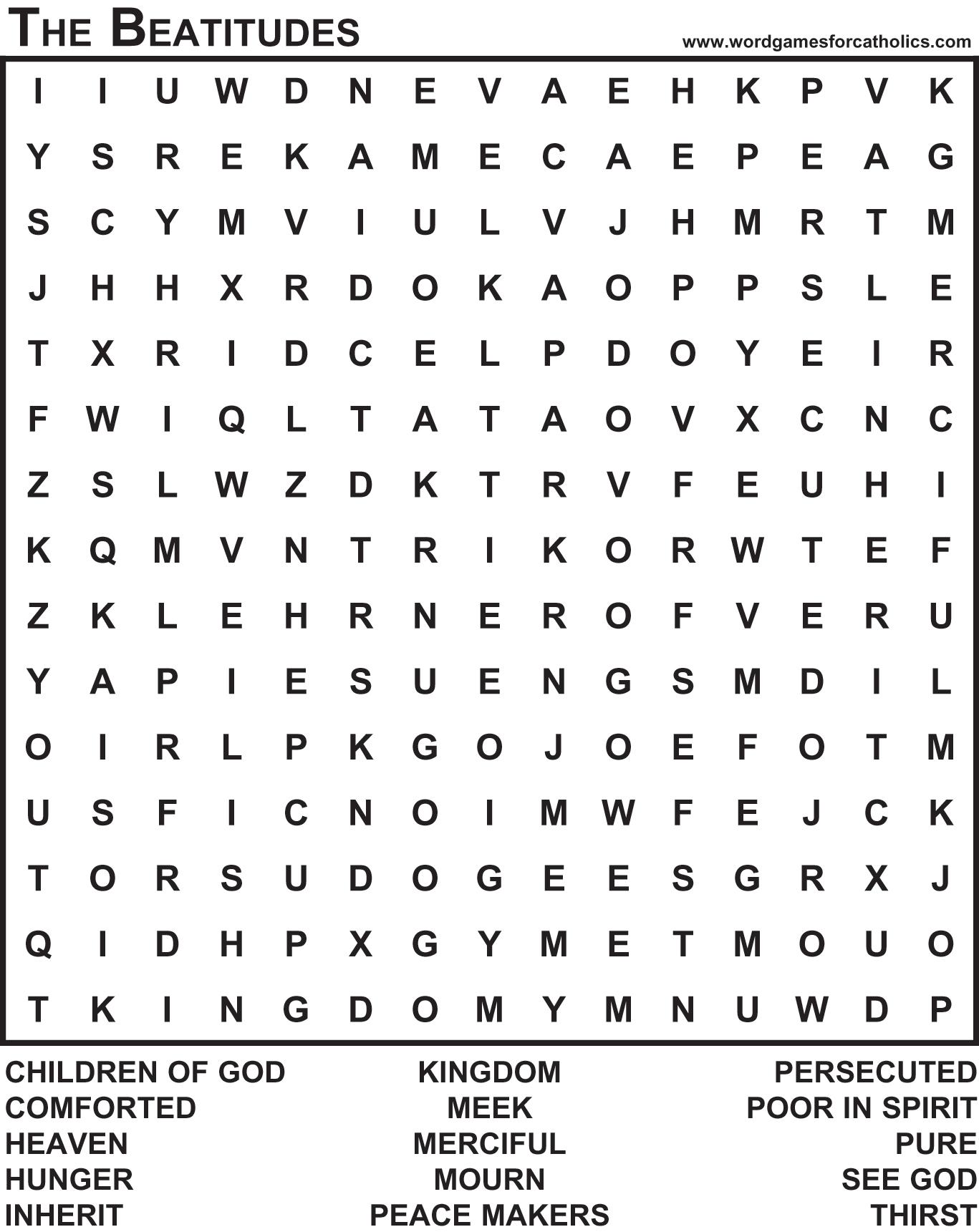
ACCOMMODATION
HOLIDAY ACCOMMODATION
ESPERANCE 3 bedroom house f/ furnished. Ph: 08 9076 5083.
GUADALUPE HILL TRIGG
www.beachhouseperth.com
Ph: 0400 292 100.
HOUSE TO SHARE for clean living male, $120p/w Riverton.
Ph: 0449 651 697.
YALLINGUP BEACH Front cottage. Three bedrooms from 2-14 March. Phone 9272 3105.
BRICK RE-POINTING Ph: Nigel 9242 2952.
PERROTT PAINTING Pty Ltd For all your residential, commercial painting requirements. Ph: Tom Perrott 9444 1200.
PICASSO PAINTING Top service.
Ph: 0419 915 836, fax 9345 0505.
BUSINESS OPPORTUNITY
WORK from home - part or full time 02 8230 0290 or visit www. dreamlife1.com.
COUNSELLING
PSYCHOLOGY and PSYCHOTHERAPY
www.peterwatt.com.au, Ph: 9203 5278.
HANDYMAN
Brendon Handyman Services
Home, building maintenance, repairs and renovations. NOR. Ph 0427 539 588.
ALL AREAS Mike Murphy Ph: 0416 226 434.
PREMISES REQUIRED FOR BILLINGS LIFE WA INC We are looking for premises north of Perth where we can hold daytime clinics for our clients. We require premises, preferably with a waiting room, for a period of three to four hours during one day of the week where we can see clients privately. A doctors’ surgery would be ideal. Similar offers would be appreciated. Our teachers are fully accredited to teach the Billings Ovulation Method of Natural Fertility Management and are experienced in fertility education. Please contact Billings LIFE WA Inc: Marilena Scarfe: 0409 119 532.
VIDEOS - ASSORTMENT musical, documentary, and nature, Dutch/German, 25 for $50. Phone 9277 6128.
CATHOLICS CORNER Retailer of Catholic products specialising in gifts, cards and apparel for Baptism, Communion and Confirmation. Ph: 9456 1777. Shop 12, 64-66 Bannister Road, Canning Vale. Open Mon-Sat.
OTTIMO Convenient city location for books, cds/dvds, cards, candles, statues, Bibles, medals and much more. Shop 108, Trinity Arcade (Terrace level), 671 Hay Street, Perth. Ph: 9322 4520. MonFri 9am-6pm.
RICH HARVEST YOUR CHRISTIAN SHOP Looking for Bibles, CDs, books, cards, gifts, statues, Baptism/Communion apparel, religious vestments, etc? Visit us at 39 Hulme Court (off
McCoy St), Myaree, Ph: 9329 9889 (after 10.30am Mon to Sat). We are here to serve.
KINLAR VESTMENTS Quality hand-made and decorated vestments: Albs, Stoles, Chasubles, altar linen, banners etc. 12 Favenc Way, Padbury. By appointment only. Ph: Vicki 9402 1318 or 0409 114 093.
ARE you buying or selling real estate or a business?
Why not ask Excel Settlements for a quote for your settlement. We offer reasonable fees, excellent service and no hidden costs. Ring Excel on 9481 4499 for a quote. Check our website on www.excelsettlements.com.
While our Bishops’ official agency for promoting women’s participation in the Church continues to lobby for more involvement in Church administration, the grass-roots Catholic Women’s League wants women to come to know the freedom of living the Church’s teachings and fidelity to the Pope. Anthony Barich reports.
Catholic Women’s League Australia (CWLA), which started in Adelaide in 1914, has undergone a major overhaul in an effort to recruit and educate young women on the fulfillment to be found in the Catholic Church.
Madge Fahy, who Melbourne Archbishop Denis Hart installed as its new president on 31 January on behalf of Australia’s Bishops, has urged younger women to join in larger numbers to help promote the ‘feminine genius’ enunciated by Pope John Paul II.
Mrs Fahy was installed at Melbourne’s St Patrick’s Cathedral with a new national executive, including her daughter Robyn, 41, Louise Ashton 38, Ann Robinson, 40, while Record columnist and John Paul II Institute of Marriage and Family Studies adjunct lecturer Anna Krohn was appointed as CWLA’s new national bioethics convenor.
Mrs Fahey’s installation comes within a week of the Australian Bishops’ Office for the Participation of Women (OPW) and Council for Australian Catholic Women launching a Parish Kit to celebrate International Women’s Day on 8



March. The Australian Catholic Bishops Conference said the kit had been prepared for use on the third Sunday during Lent, 7 March. Director of OPW, Kimberly Davis, said it is essential that “as a Catholic Church, we recognise women.
In Australia, women now make up 66 per cent of mass attendees, and we need to celebrate the enormous contribution they make in areas of ministry, liturgy, music, service, as pastoral associates and in a huge number of roles, she said.
“The Church needs to affirm the “contribution women are making to the life and mission of the Church,” Ms Davis said.
This happened 10 years ago when the Australian Bishops released the report into the partici-
pation of women in the Catholic Church in Australia, Woman and Man: One in Christ Jesus ACBC President, Adelaide Archbishop Philip Wilson, also released an open letter last month to Australian Catholic women to mark the 10th anniversary of the report. “Each member of the Body of Christ brings their own Godgiven gifts to the fundamental task in front of us all – to seek to build up God’s Kingdom in our own place and our own time. As women, you bring to this holy enterprise a special gift, which Pope John Paul II famously described as ‘the genius of women’,” Archbishop Wilson said in the letter.
A 2008 update of the 2005 review of membership of advisory councils and other bodies connect-
ed with the Bishops Conference saw an increase in the balance of women and men, clergy, Religious and lay members on these councils. By then, 40 per cent of the non-episcopal positions were held by women.
Mrs Fahy said the key to women’s participation in the life of the Church and the finding and fulfillment of their vocations is to be found in the Church’s teachings and fidelity to the Pope, with Mary the Mother of God as their model.
While CWLA has 6500 members around Australia, Mrs Fahy told The Record that after decades of the movement nearly “humbling itself out of existence”, there is an urgent need to promote the CWLA and encourage young women in the freedom to be found in following Catholic teaching and especially the Pope.
“There must be an authentic voice in women’s issues in the Church, but within it there are many women’s groups who don’t support its authentic teaching, so we must pick up the slack and show the young people the benefits of following the Pope; getting them back on track,” Mrs Fahy said.
“I don’t think it’s going to be easy, and I don’t pretend it will happen over night, but all work starts with prayer, without it you may as well forget the whole thing, so it’s prayer first then action.”
“Many young people are involved in social justice, but that must come from the Church’s teaching, and to do that they must follow what John Paul II said about ‘feminine genius’, and it all comes back to Our Lady and her ‘yes’. That’s where we’re coming from and where we hope to pick up recruits.”
“Our Lady is our patron, we have the Holy Spirit too, so with those two we can bring young girls back to the faith and take up the work in the League, and carry on.”
She also wants the CWLA to become better known by Bishops, priests and the laity.
Following World Youth Day 2008 in Sydney, in which League members were heavily involved, it became clear to CWLA that its members are ageing, and that there is an urgent need to give young
women “solid grounding” in the Catholic faith so they can face the world and see their vocation in it. “So many of them don’t get it (a solid grounding in the Catholic faith) at school, then many find the world isn’t what they expected it to be, and some come back to the Church,” she said.
To this end, CWLA has partnered with Anima Women’s Network, led by Anna Krohn, to encourage youth to “step up and to really work within the teachings of the Church, as it’s there they’ll find their feminine genius”, Mrs Fahy said. “That’s our aim. So many people have not a clue about the CWL, but we’ve been around since 1914, so why is that? The women (members) believe that the left shouldn’t know what the right is doing, which is all well and good, but when the members start to die in big numbers, what will be left?” she said.
The renewal of the CWLA will be formatted differently, with modern women more involved in their own work, so the movement will need to structure itself around this. This partnership is promising as many of its followers are in their 20s, who “are searching and need help”, Mrs Fahy said. “Young girls today are searching, and if we’re not there for them, who is prepared to listen to them?”
The CWLA is a member organisation of the World Union of Catholic Women’s Organisations (WUCWO) and shares in its aim to promote the presence, participation and co-responsibility of Catholic women in society and the Church. WUCWO represents over five million members from Catholic women’s organisations on every continent and speaks on behalf of them at major forums around the globe, including the Economic and Social Council of the United Nations; the International Labour Organisation (ILO); the UN Educational, Scientific and Cultural Organisation (UNESCO); the Food and Agricultural Organisation (FAO); and the Council of Europe.
WUCWO will celebrate its 100th anniversary at an international conference in Jerusalem in October.
POPE Paul VI called her “our collaborator” while Pope John XXIII affectionately dubbed her the “little one” - La Piccaninain acknowledgement of her small size.
Manly-born Rosemary Goldie, the first woman to hold a post in the Roman Curia, died on 27 February in Randwick aged 94.
Pope John Paul I loved her energy as did Pope John Paul II, who was a frequent visitor to her office in the Vatican’s St Calixtus Palace and when he was in Sydney for World Youth Day in 2008, Pope Benedict XVI took time out to make a special trip to Randwick to see her.
For more than 50 years she was one of the leading figures of the Vatican’s bureaucracy since initially being appointed to the Vatican’s Permanent Committee for International Congresses of the Lay Apostolate in 1952. Her work involved preparing for the Second World Congress of the Lay Apostolate in Rome in 1957, during which time she came into contact with Young Christian Workers founder Joseph Cardjin, who was later appointed a Cardinal; and with the then

Monsignor Giovanni Battista Montini, who several years later became Pope Paul VI. Her calmness, attention to detail and warmth together with her strong faith and love of God, brought her to the notice of others within the Vatican and in 1959 when Pope John XXIII announced the Second Vatican Council, the Permanent Committee of which she was a member was asked to help with preparations.
Then Rosemary herself was singled out and chosen to act as auditor for the council, an unprecedented move in Church history which had before this time only appointed men.
In 1967, Rosemary worked to help organ-
ise the third congress of the Lay Apostolate, and when the Permanent Committee was replaced by the newly formed Pontifical Council for the Laity, Rosemary became one of only two undersecretaries and the first woman to be part of the Roman Curia.
“She was very committed to the work of this new organisation and would come in early in the morning and leave late, even though this was not her only work as she also had her home where she always gave her best,” said Guzman Carriquiry, the current undersecretary of the Laity Council.
Today, Guzman Carriquiry and others from the Vatican pay tribute to Rosemary and her remarkable life in Zenit, the Romebased international news agency.
“She was one of the protagonists of the great contemporary historic current of the promotion of the laity in the Church,” Guzman Carriquiry told Zenit, adding that throughout his years of working with her, he says “he always appreciated not only her faithful Christian witness but her tireless service to the Roman Curia”.
Guzman then qualified his remarks saying: “And when I say tireless, I mean it because truly her whole life was concentrated in a very singular and absorbing way on the work she carried out through the organism of the Holy See.”
Although over 75 and officially retired, Rosemary continued to work as the director for some of her students and writing her
memoirs, From a Roman Window, which was published by HarperCollins in 1998. She then went on edit her mother’s autobiography, which was also published and told the extraordinary story of Dulcie Deamer, a 1900s dancer, entertainer and journalist.
Returning to Australia in 2002, Rosemary Goldie spent her final years being cared for by the Sisters of the Poor at Mount St Joseph’s Home for the Aged where her mother had also spent her last years.
Rosemary’s Requiem Mass was held at the Home’s chapel at Randwick on 5 March, presided over by Cardinal George Pell of Sydney at the Requiem Mass with Monsignor William Mullins as chief celebrant.
The former official of the Congregation for Catholic Education in Rome and Prelate of Honour to Pope John Paul II, Monsignor Mullins was a longtime friend of Rosemary’s and remembers her with great affection; as does journalist, scholar, theologian and one-time Church bureaucrat, Dr Michael Costigan, who was a friend over more than 60 years.
“Although small in stature, Rosemary was a giant in the service of her Church and in her advocacy on behalf of the laity and occupies a place in our nation’s Catholic story alongside the likes of Caroline Chisholm and the soon-to-be-canonised, Mary MacKillop,” Dr Costigan said.